ESA Navigation 
zdroje zpráv:
ESA technology leading to safer, smarter European roads
23.8.2022 13:40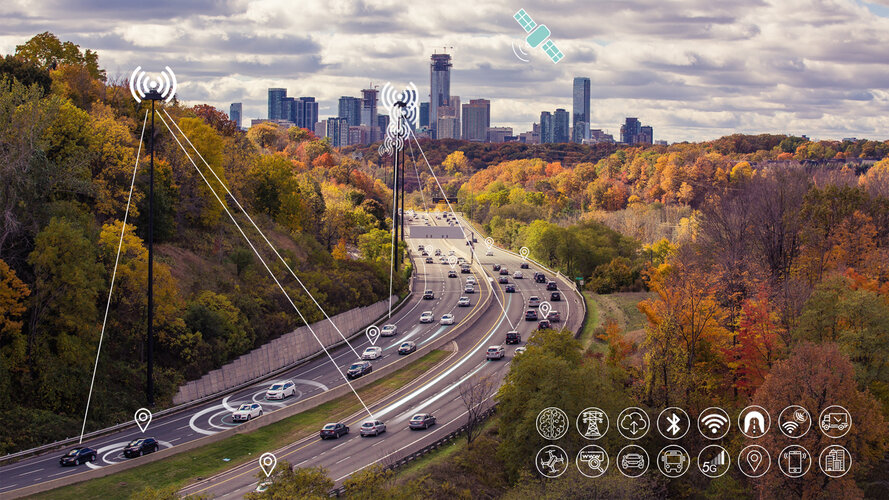
An agreement signed yesterday looks to extend the use of ESA space technology along European roads. The Agency’s Navigation Directorate has finalised a Memorandum of Intent with ERTICO, the organisation for the European Road Transport Telematics Implementation Coordination, a public-private partnership focused on the development, promotion and connection of intelligent road systems and services.
ESA technology for safer, smarter European roads
23.8.2022 13:40
An agreement signed yesterday looks to extend the use of ESA space technology along European roads. The Agency’s Navigation Directorate has finalised a Memorandum of Intent with ERTICO, the organisation for the European Road Transport Telematics Implementation Coordination, a public-private partnership focused on the development, promotion and connection of intelligent road systems and services.
ESA testing sensor network for smart city navigation
4.8.2022 10:27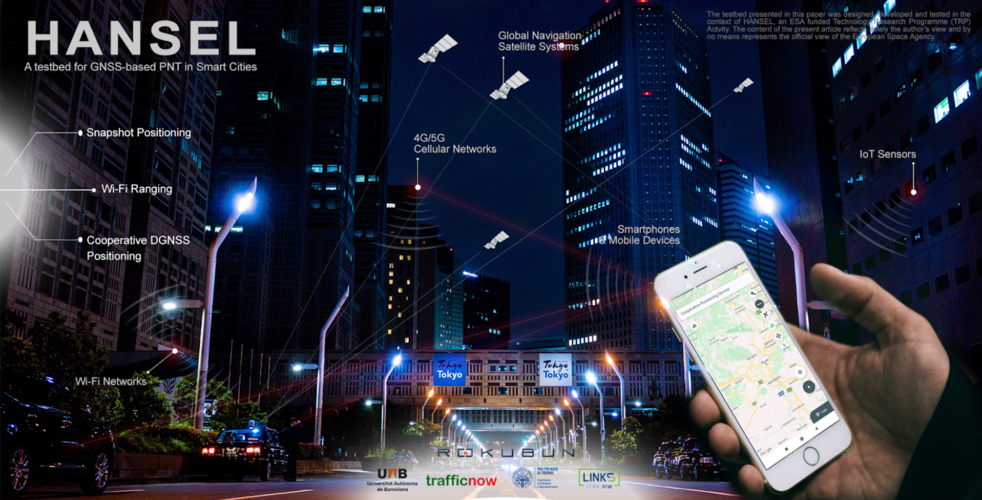
New infrastructure added to ESA’s ESTEC technical centre in the Netherlands is helping to test how tomorrow’s smart cities will operate in practice. The HANSEL system is hosted in ESTEC’s Navigation Laboratory and allows linking to sensors across the site, providing insight into the collective networking and computing needed to get a variety of ‘intelligent elements’ to mesh seamlessly together – what the brain of a future smart city might look like.
Sharpening satnav for smartphones
19.7.2022 9:24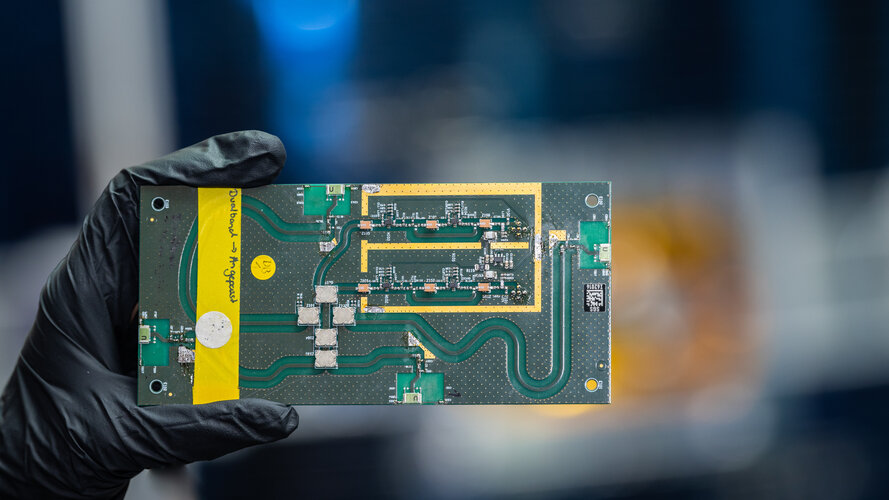
Satellite navigation has transformed the way people live and work, but because the majority of us access it via our smartphones, the actual precision of positioning that we end up with has plenty of room for improvement. ESA led a project investigating if an array antenna approach borrowed from satellite design might deliver enhanced positioning for future smartphones, tablets, drones and other mass-market devices.
Galileo 2nd Generation takes 11 leaps forward
14.7.2022 14:25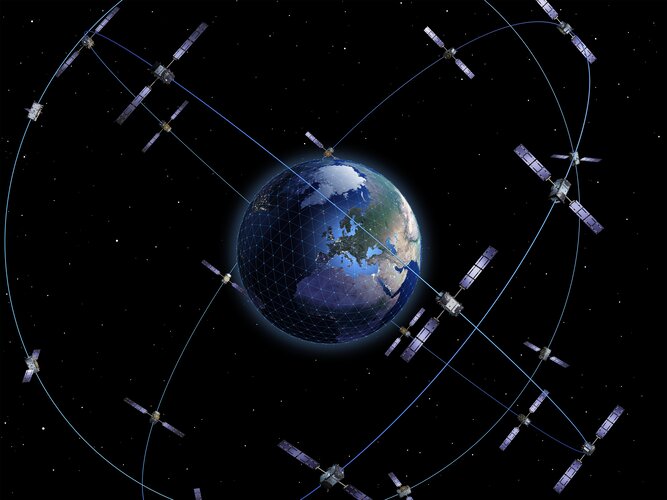
Europe’s Galileo constellation is already the world’s most precise satellite navigation system, but now Galileo Second Generation, G2, is coming. A set of 11 procurements – adding up to a maximum of up to approximately 950 million euros – are being released over the course of July by ESA, aiming for this next generation satnav system to begin operations and provide new capabilities later in this decade.
Galileo Second Generation takes 11 leaps forward
14.7.2022 14:25
Europe’s Galileo constellation is already the world’s most precise satellite navigation system, but now Galileo Second Generation, G2, is coming. A set of 11 procurements – adding up to a maximum of up to approximately 950 million euros – are being released over the course of July by ESA, aiming for this next generation satnav system to begin operations and provide new capabilities later in this decade.
Smart competition for clever navigation at NAVISP Industry Days
7.7.2022 13:45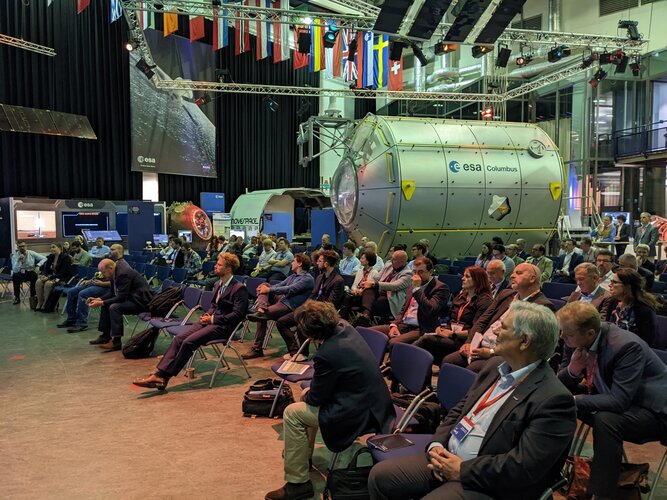
Europe’s leading companies and research institutes working on positioning, navigation, and timing (PNT) technologies met at ESA’s technical heart in the Netherlands in mid-June for this year’s NAVISP Industry Days, devoted to the latest developments in the Agency’s Navigation Innovation and Support Programme.
New navigation missions for enhanced satnav and Earth mapping
6.7.2022 13:22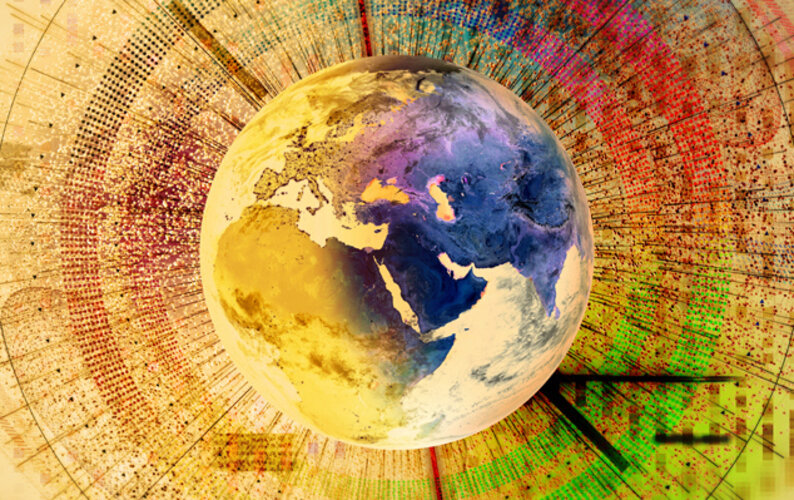
ESA’s Navigation Directorate – already the design architect of the Galileo satellite navigation system, Europe’s largest satellite constellation – is reaching out to European industry as it plans the development and in-orbit validation of future ‘positioning, navigation and timing’ (PNT) missions into novel orbits.
EGNOS technology for Africa – ESA signs deal with ASECNA
29.6.2022 17:10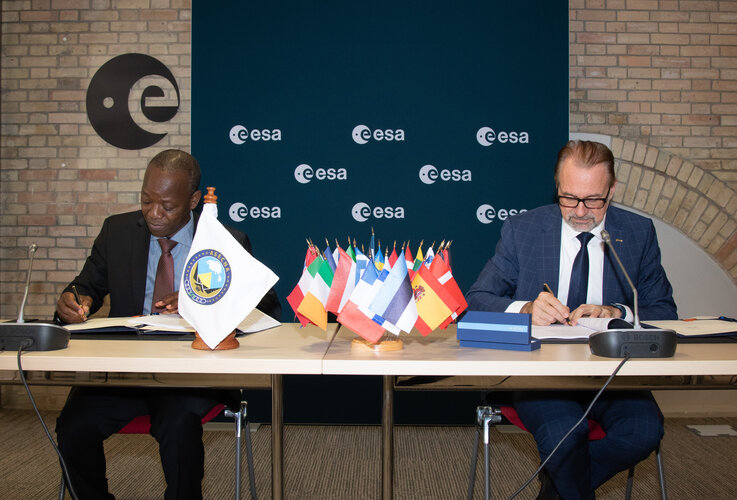
European technology that allows satellite navigation signals to safely guide aircraft down for landing in the majority of Europe’s airports will now be put to use across Africa and the Indian Ocean. ASECNA, the Agency for Air Navigation Safety in Africa and Madagascar, and ESA today signed an agreement to deploy a Satellite-based Augmentation System (SBAS) across a service region of more than 16.5 million sq. km, one and a half times the size of Europe’s coverage area.
Space tech to be put to test on Asia-bound Fiat Panda
20.6.2022 10:47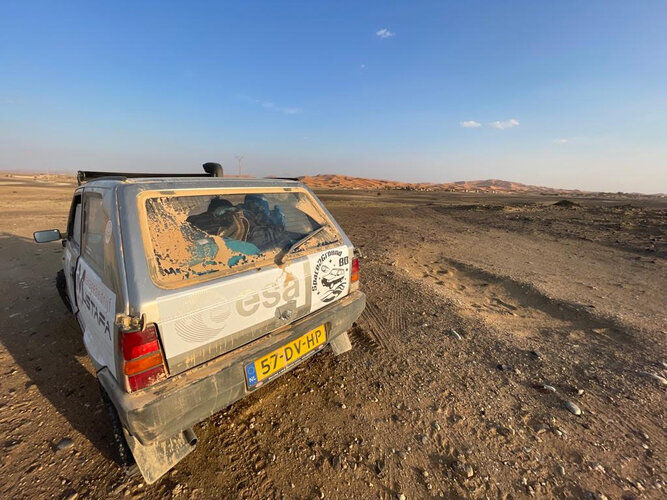
Two ESA engineers are offering a unique testbed for novel space technology: a second-hand, two-decade-old Fiat Panda, set to be driven 16 000 km to compete in the Mongol Rally from Europe to the Mongolian steppes during summer 2023. Having already taken part in the Panda Raid race to Morocco and back, the ‘space2ground’ team plans to perform on-board testing over the course of their epic Asiatic drive.
Galileo – a new tool for science
13.6.2022 9:12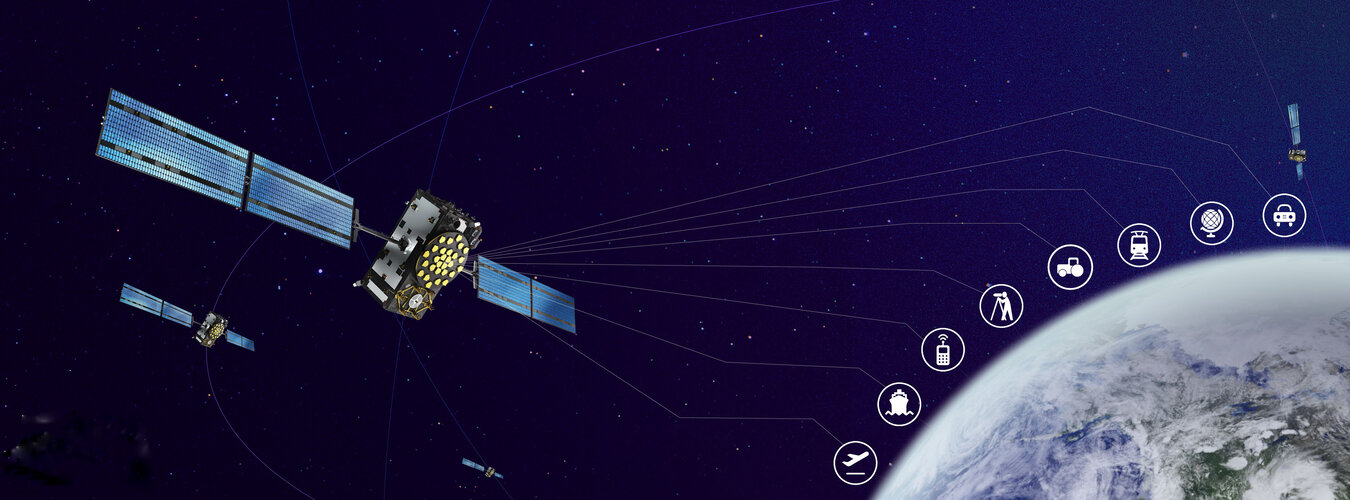
Every moment of every day, Europe’s constellation of Galileo navigation satellites that ring our planet transmits precisely shaped and timed signals, down through the atmosphere, reflecting back from Earth’s land, seas and ice and extending far out into space, as far as the Moon.
Find your way to the future at ESA’s NAVISP Industry Days
16.5.2022 11:46
After a pandemic-induced gap of more than two years, Europe’s leading companies working on positioning, navigation and timing technologies will meet face-to-face at ESA’s technical heart in the Netherlands for the NAVISP Industry Days, devoted to the latest developments in the Agency’s Navigation Innovation and Support Programme.
Meet the navigation team | Space jobs
5.5.2022 18:00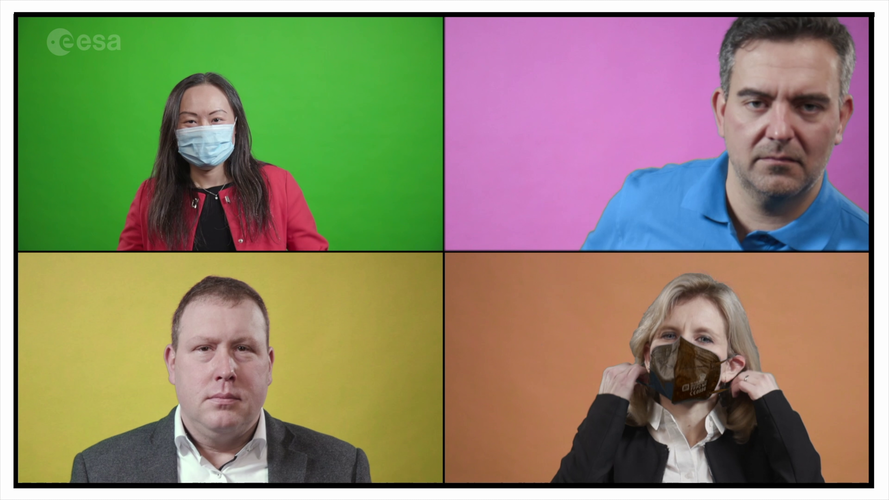 Video:
00:07:13
Video:
00:07:13
Dive into our navigation activities and hear about the projects, goals, challenges and work environment from ESA staff working in the Navigation Directorate and the Directorate for Technology, Engineering and Quality.
Find out more about Careers at ESA: https://careers.esa.int/
ESA’s satnav summer school open to students
22.4.2022 17:44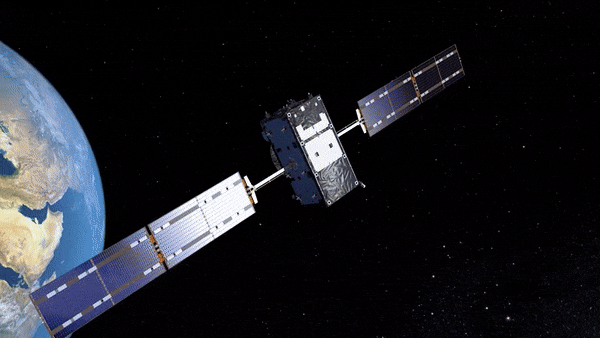
This year’s ESA/JRC International Summer School on Global Navigation Satellite Systems will take place in July, at Kraków in the South of Poland.
Newest Galileo satellites join working constellation
22.4.2022 16:43
Europe’s latest Galileo navigation satellites in space have completed their post-launch commissioning process, leaving them ready to join the working constellation, transmitting navigation signals across planet Earth as well as relaying distress calls to rescuers.
The Moon – where no satnav has gone before
20.4.2022 15:29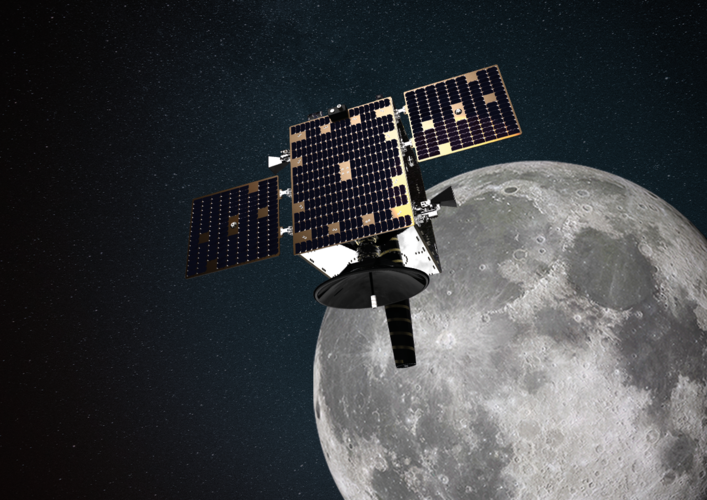
The test version of a unique satellite navigation receiver has been delivered for integration testing on the Lunar Pathfinder spacecraft. The NaviMoon satnav receiver is designed to perform the furthest ever positioning fix from Earth, employing signals that will be millions of times fainter than those used by our smartphones or cars.
The Moon – where no satnav has gone before
20.4.2022 15:29
The test version of a unique satellite navigation receiver has been delivered for integration testing on the Lunar Pathfinder spacecraft. The NaviMoon satnav receiver is designed to perform the farthest ever positioning fix from Earth, employing signals that will be millions of times fainter than those used by our smartphones or cars.
406 Day: how Galileo helps save lives
6.4.2022 9:45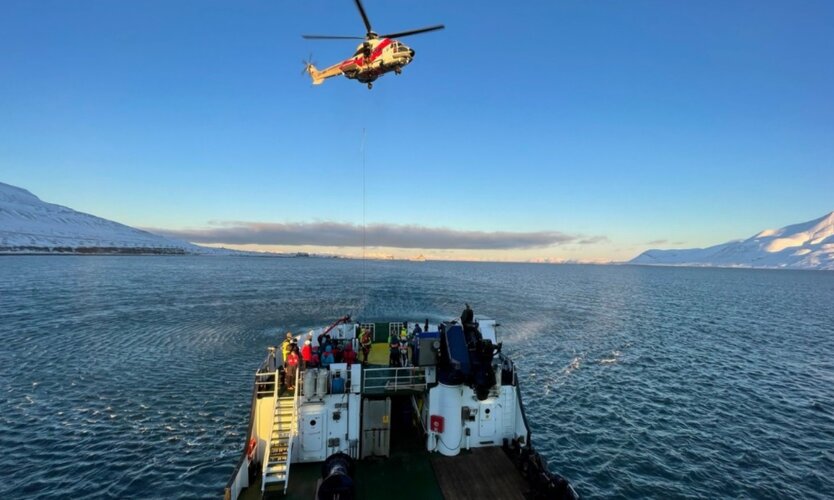
Today is the annual 406 Day, celebrating the life-saving importance of emergency beacons, named for the radio frequency they operate on, as well as the satellites that relay their signals – with Europe’s own Galileo constellation prominent among them. While Galileo’s main purpose is satellite navigation, the system also picks up distress messages from across the globe and relays them to regional search and rescue authorities.
Satellites around the Moon come another step closer
29.3.2022 9:30
ESA is going to the Moon – in collaboration with its international partners – and seeks to build a lasting lunar link to enable sustainable space exploration.
Turn your phone into a space monitoring tool
22.3.2022 16:30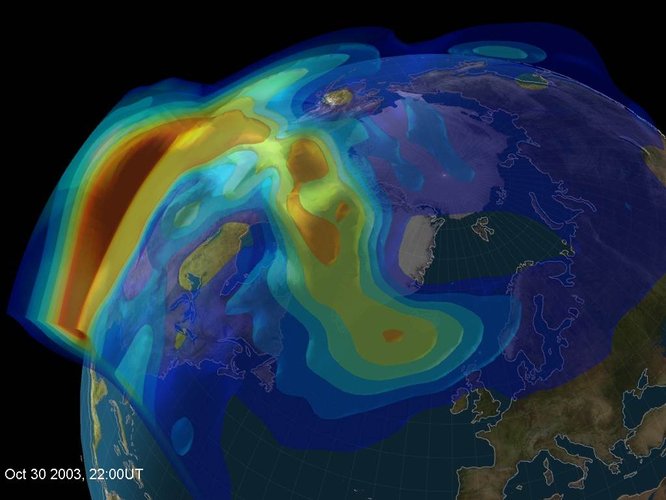
A newly released Android app will turn your smartphone into an instrument for crowdsourced science. Leave it by your window each night with your satnav positioning turned on and your phone will record small variations in satellite signals, gathering data for machine learning analysis of meteorology and space weather patterns.
Satellite navigation signals help map sea surface shape
22.3.2022 12:30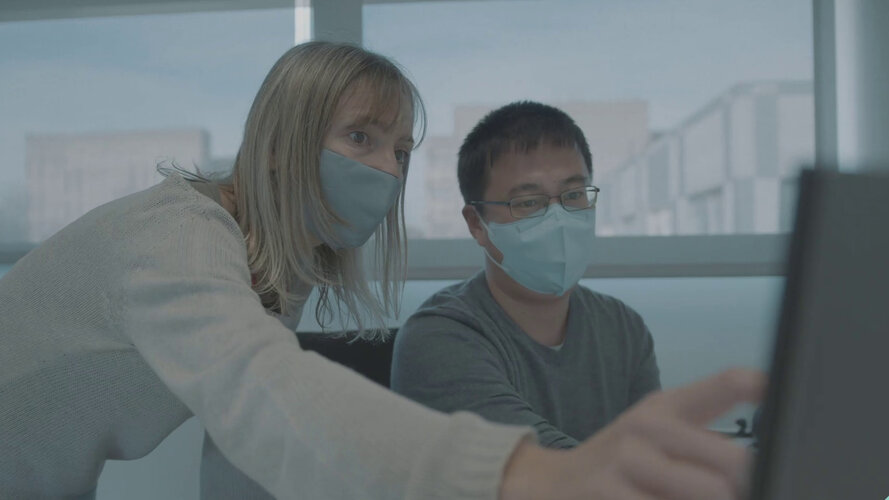 Video:
00:05:00
Video:
00:05:00
Monitoring the constantly changing shape of the sea surface is important for scientific and societal applications such as ocean current forecasting, climate research, ship routing, cable laying, and debris tracking.
A project supported by the Discovery element of ESA’s Basic Activities recently investigated a new technique to measure sea surface topography very precisely. The project was based on an idea submitted by the Institute for Space Studies of Catalonia (IEEC) through the Open Space Innovation Platform (OSIP) – ESA’s place for your space ideas.
The technique involves looking at satellite navigation (GNSS) signals that have been reflected off of the sea surface at very low angles. At these so-called grazing angles, waves and surface roughness have very little impact on the reflection process; the sea surface acts as a very smooth mirror.
IEEC’s Estel Cardellach, principal investigator and submitter of the OSIP idea explains: “In a mirror-like reflection the phase of the signal can be tracked – it is continuous. Different surface heights result in different phase measurements. It gives a very precise measurement of the surface altitude at a few centimetres’ precision.”
The ESA-funded activity involved developing a GNSS receiver and setting up an experiment in the Balaeric Islands to collect GNSS signals reflected off the sea surface. The team – made up of IEEC, imedea, SOCIB and DLR – then processed the signals for optimised measurements of the shape of the sea surface.
“Thanks to OSIP and ESA Discovery we have been able to conduct this experiment on grazing GNSS reflectometry under monitored conditions,” says Manuel Martin-Neira, ESA technical officer for the project. “We have linked the coherence of the reflected signals to wave height and elevation angle of GNSS satellites. These results have been very useful for preparing the PRETTY mission.”
ESA’s PRETTY (Passive REflecTomeTry and dosimetry) CubeSat mission is a small satellite that will carry out grazing angle GNSS altimetry from orbit. It is due to launch later in 2022.
ESA probing navigation via the quantum realm
14.3.2022 13:31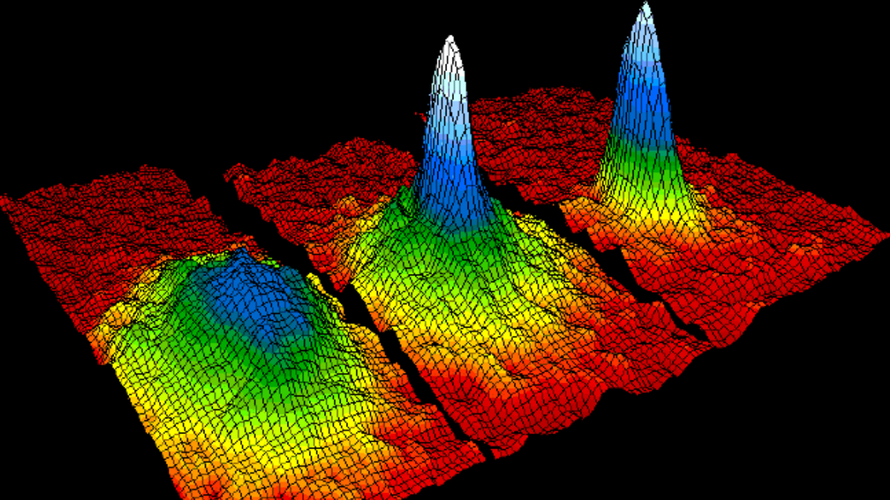
ESA’s NAVISP programme – helping to invent the future of European navigation – is probing the science of the very small. The aim is to employ hyper-sensitive quantum technology-based sensors as supplementary navigation solutions, including tracking local variations in gravity that could be matched onto regional and global gravity maps.
Wanted: your new ideas for navigation
17.2.2022 15:52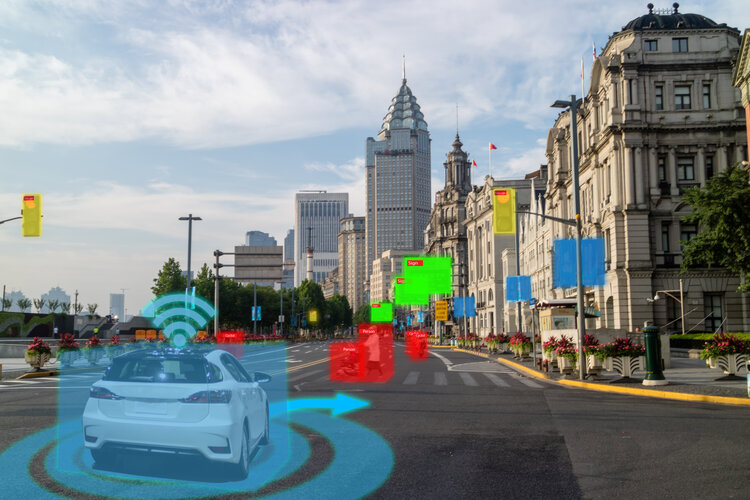
It is hard to overstate the importance of knowing precisely where (and when) you are and where you are going within today’s economy and society. Do you have a promising idea to improve the current positioning state-of-the-art? Then ESA’s navigation-focused NAVISP research programme wants to hear from you, before the end of March.
Inventing the future of Navigation
14.2.2022 14:30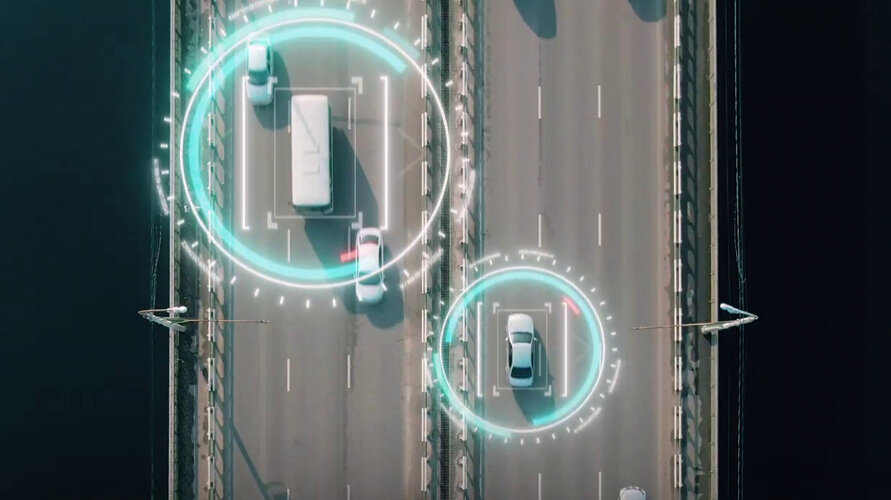 Video:
00:05:15
Video:
00:05:15
Many of the experts that designed and oversaw the Galileo satnav system are now supporting cutting-edge European companies in the development of new navigation technologies and services. The result is ESA’s Navigation Innovation and Support Programme, NAVISP.
NAVISP is looking into all kinds of clever ideas about the future of navigation: ways to improve satellite navigation, alternative positioning systems and, new navigation services and applications. Working in partnership with European industry and researchers, more than 200 NAVISP projects have been initiated so far.
NAVISP is divided into three elements, the first looking into improving and expanding satellite navigation, as well as establishing novel ‘positioning, navigation and timing’ (PNT) services. NAVISP’s second element focuses on innovation for competitiveness, developing all kinds of new PNT products and services. Its third element covers support to Member State priorities, including support for national testbeds and programmes.
Two new satellites mark further enlargement of Galileo
5.12.2021 6:59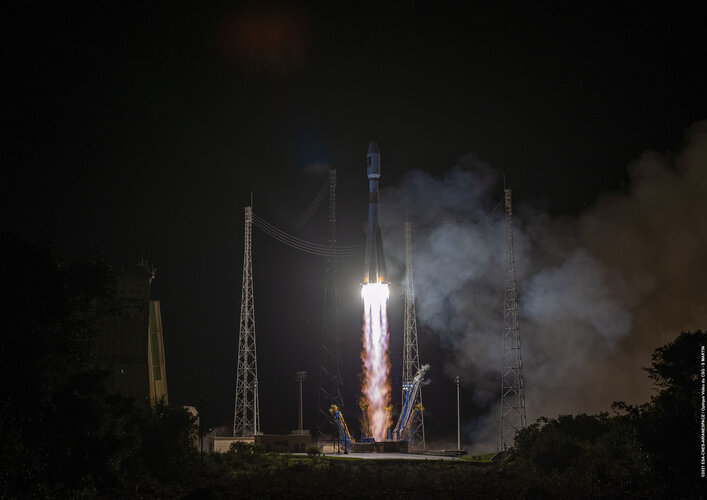
Europe’s largest satellite constellation has grown even bigger, following the launch of two more Galileo navigation satellites by Soyuz launcher from Europe’s Spaceport in French Guiana on 5 December. Galileo satellites 27-28 add to an existing 26-satellite constellation in orbit, providing the world’s most precise satnav positioning to more than 2.3 billion users around the globe.
Galileo launch postponed
4.12.2021 1:34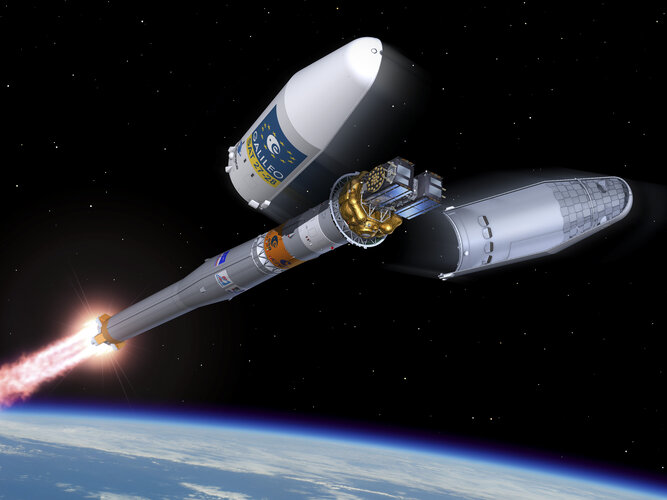
The launch of Europe’s latest Galileo satellites has been postponed. Launch operations were interrupted at H-10 minutes due to adverse weather conditions (lightning). The Soyuz launch vehicle and satellites are in a stable and safe condition.
Watch Galileo launch on night of 4-5 December
4.12.2021 1:34
The launch of Europe’s latest Galileo satellites is now scheduled for the night of 4-5 December.
Watch Galileo launch on night of 4-5 December
4.12.2021 1:34
Galileo satellites 27 – 28 lifted off by Soyuz launcher VS26 from Europe’s Spaceport in French Guiana at 01:19 CET on 5 December (4 December at 21:19 local Kourou time). Follow the launch live on ESA Web TV Two.
Watch Galileo launch on night of 2-3 December
2.12.2021 10:34
The launch of Europe’s latest Galileo satellites is now due to take place tonight, very early on Friday morning. The original launch date was postponed due to adverse weather conditions at the launch site.
Galileo launch postponed
2.12.2021 10:34
Due to unavailability of a downrange tracking station, Arianespace has taken the decision to postpone the fueling of Galileo's three stage Soyuz launcher. The VS26 Soyuz launch vehicle and the satellites are in a stable and safe condition.
Watch Galileo launch on night of 3-4 December
2.12.2021 10:34
The earliest launch date for Europe’s latest Galileo satellites is now during the night of 3-4 December.
Watch Galileo launch on night of 3-4 December
2.12.2021 10:34
Europe’s latest Galileo satellites will be launched on the night of 3-4 December. Arianespace has taken the decision to begin fuelling their three-stage Soyuz launcher.
12 things you never knew about Galileo satellites
2.12.2021 10:12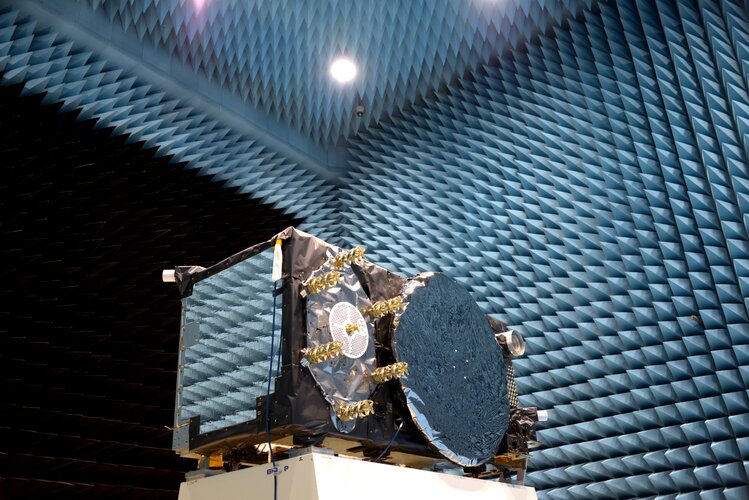
Europe’s Galileo satellite navigation system is providing the world’s most precise positioning services, but the satellites at its heart are surprisingly compact, and dependent on many different technologies to keep running. Here are 12 things you probably didn’t know about them:
Galileo satellites placed on Soyuz launcher
30.11.2021 13:28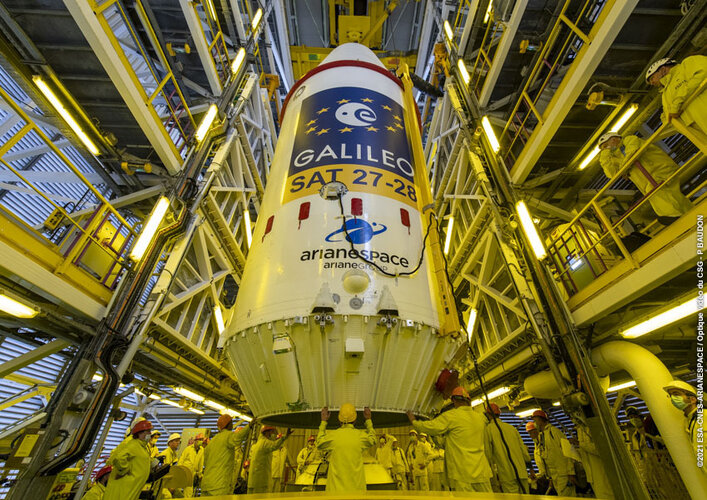 Image:
Galileo satellites placed on Soyuz launcher
Image:
Galileo satellites placed on Soyuz launcher
Galileo satellites given green light for launch
29.11.2021 10:16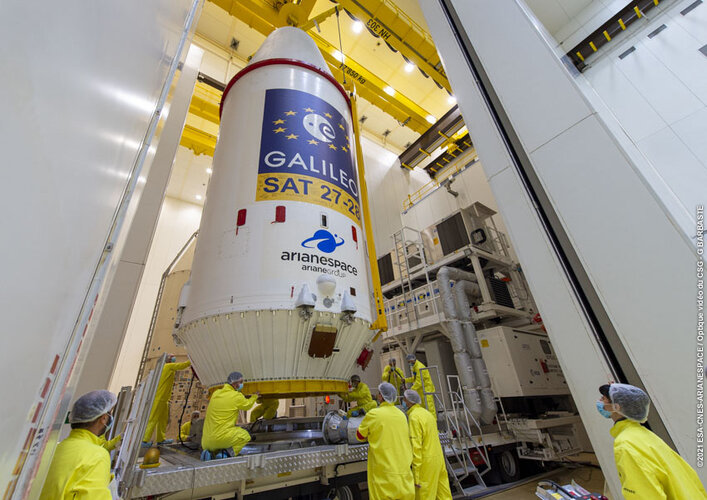
Europe’s next pair of Galileo satellites have been given a green light for launch. Last Friday’s Launch Readiness Review confirmed that the satellites, the supporting ground installations, and the early operations facilities and teams are ready for lift-off on the early hours of Thursday morning, European time.
Galileo satellites given green light for launch
29.11.2021 10:16
UPDATE: GALILEO LAUNCH NOW SCHEDULED FOR 3 DECEMBER AT 0127 CET (2 DECEMBER 2127 KOUROU TIME)
Europe’s next pair of Galileo satellites have been given a green light for launch. Last Friday’s Launch Readiness Review confirmed that the satellites, the supporting ground installations, and the early operations facilities and teams are ready for lift-off on the early hours of Thursday morning, European time.
Galileo satellites given green light for launch
29.11.2021 10:16
UPDATE: GALILEO LAUNCH NOW SCHEDULED FOR 3 DECEMBER AT 01:27 CET (2 DECEMBER 21:27 KOUROU TIME)
Europe’s next pair of Galileo satellites have been given a green light for launch. Last Friday’s Launch Readiness Review confirmed that the satellites, the supporting ground installations, and the early operations facilities and teams are ready for lift-off on the early hours of Thursday morning, European time.
Galileo: en route to full operational capability
26.11.2021 13:00 Video:
00:05:36
Video:
00:05:36
Soon another pair of Galileo satellites will be launched on top of a Soyuz from Europe spaceport in French Guiana. These satellites are the first of the so-called 'Batch 3', comprising of 12 additional first-generation Galileo satellites commissioned in 2017 to bring the constellation to full operational capability. They will be used to further expand the constellation up to 38 satellites and act as backups and spares for satellites that reach their end-of-life.
This 11th Galileo launch also marks the 10 year anniversary of the first launch of the Galileo operational satellites and the start of the construction of the constellation. Ten years later Galileo is the most accurate satellite navigation system in the world and available on every recent smartphone and device. It is also two decades since satellite navigation was first introduced as a completely new activity in the European space sector.
Meanwhile ESA continues to ensure the future of the Galileo programme and European expertise in satellite navigation. For Galileo ESA has already commissioned a second generation of more powerful and flexible navigation satellites while new services are being developed to meet market demand.
Galileos attached to upper stage as launch draws near
25.11.2021 17:24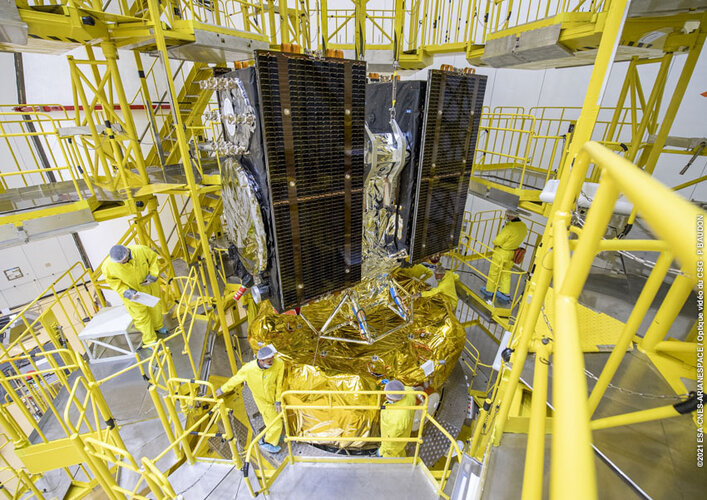 Image:
Galileos attached to upper stage as launch draws near
Image:
Galileos attached to upper stage as launch draws near
Galileo satellites in place for launch
25.11.2021 17:08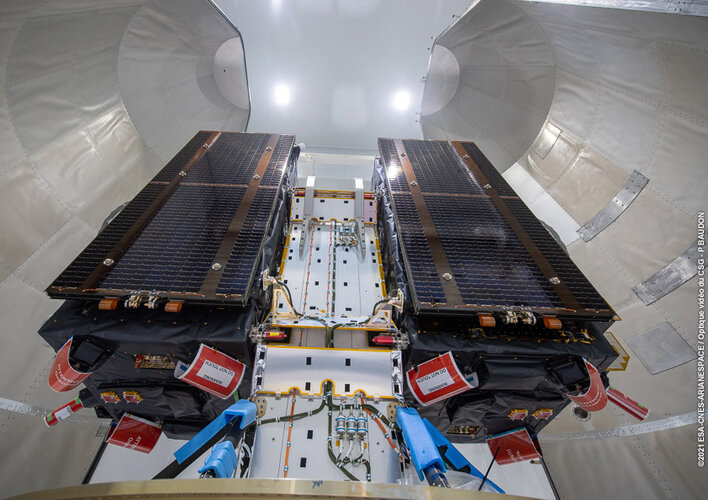
Europe’s next two Galileo satellites have been attached to the dispenser on which they will ride to orbit, and the launcher fairing that will protect them during the first part of the ascent to orbit has been closed around the pair.
Galileo prototype GIOVE-A switched off after 16 years in orbit
24.11.2021 13:00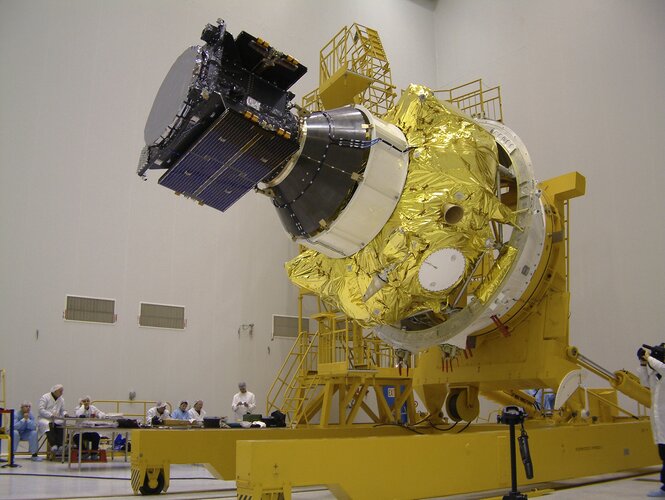
Europe’s first prototype satellite for Galileo, GIOVE-A, has today been formally decommissioned after 16 years of work in orbit. The 2005-launched mission secured Galileo’s radio frequencies for Europe, demonstrated key hardware and probed the then-unknown radiation environment of medium-Earth orbit.
Galileo Control Segment upgrade ready for next launch
25.10.2021 13:58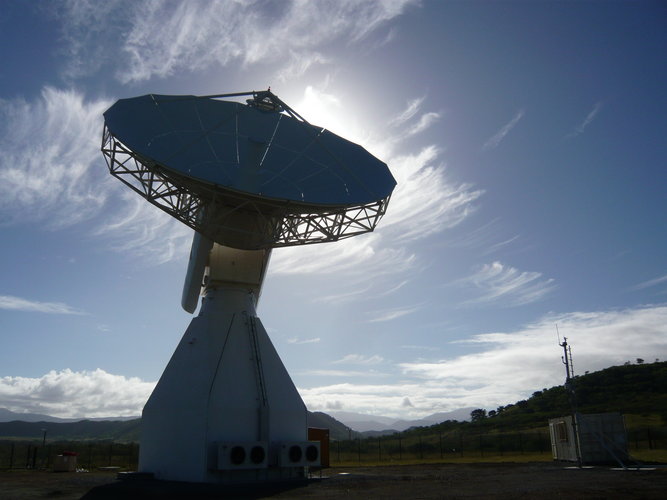
A significant first for next month’s 11th Galileo launch: thanks to an upgrade of the world-spanning Galileo Control Segment, this will be the first launch where the satellites ‘ first steps into space will be overseen from an existing Galileo Control Centre, rather than requiring an external mission control site.
Galileo: the first ten years
21.10.2021 12:30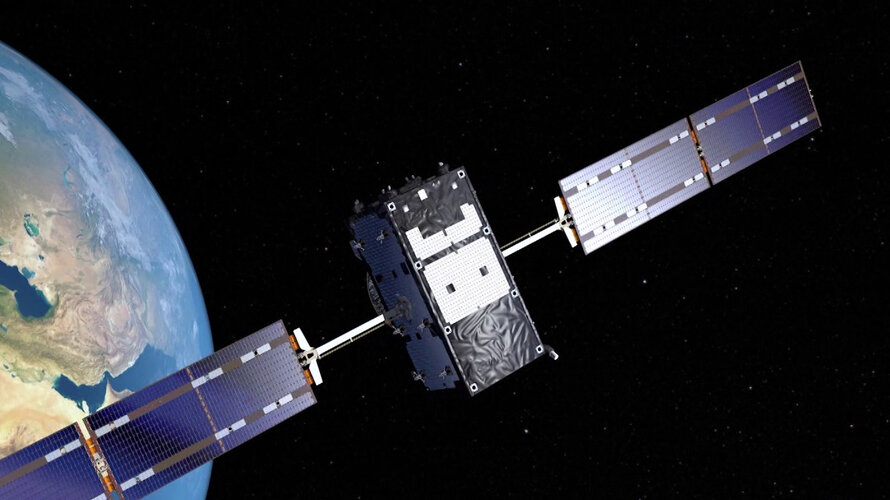 Video:
00:01:25
Video:
00:01:25
Europe’s own satellite navigation system, Galileo, has become the world’s most precise, delivering metre-level accuracy, available anywhere on Earth. It is also saving lives, relaying distress calls for search and rescue. Today there are 26 Galileo satellites in orbit 23 222 km over our heads; the first of them were launched on 21 October 2011, with nine more launches in the following years. The satellites in space are supported by a globe-spanning ground segment. The system as a whole is set to grow, with the first of 12 ‘Batch 3’ about to join the current satellites in orbit and new ‘Galileo Second Generation’ satellites in development.
Galileo has been financed by the EU and developed by ESA, with services delivered by EUSPA.
Galileo satellites arrive at Europe’s Spaceport
8.10.2021 9:20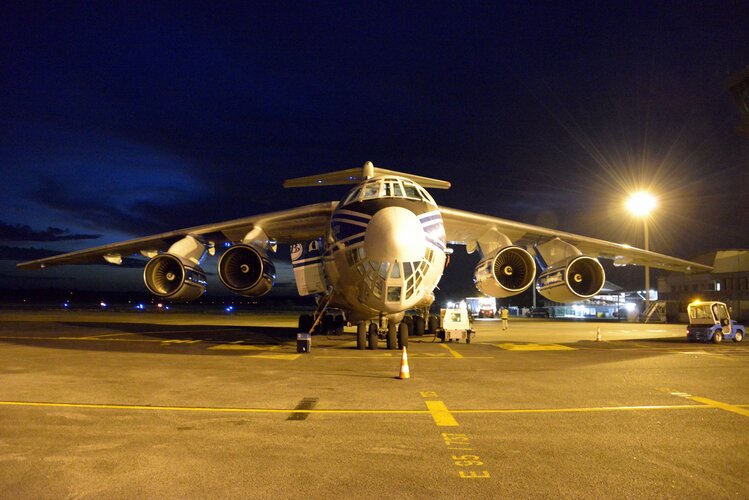
The latest pair of Galileo satellites have touched down at Europe’s Spaceport in French Guiana, ahead of their launch together next month.
New angle on reflected satnav yields sharper sea tracking
8.9.2021 16:48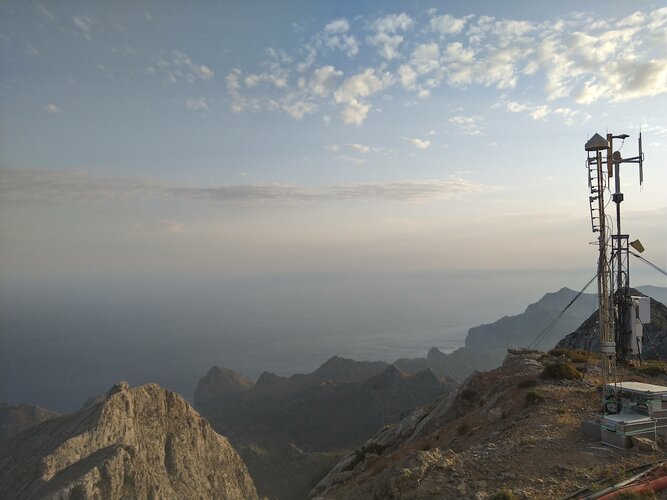
An experimental satellite navigation receiver station high atop Spain’s Mallorca island has opened up a novel view of the ever-changing face of the sea. By picking up satnav signals from the far horizon as they bounce off ocean waves, the receivers are able to measure sea surface height down to a scale of centimetres.
EC Commissioner Breton visits ESA-ESTEC
8.9.2021 11:33 Image:
EC Commissioner Breton visits ESA-ESTEC
Image:
EC Commissioner Breton visits ESA-ESTEC
Join our online event: Galileo Second Generation Industry Day on 7th September
26.8.2021 15:27
As work proceeds on Europe's Galileo Second Generation satellites, the European Space Agency is pleased to announce the Galileo Second Generation Industry Day 2021 online event on Tuesday 7 September.
Galileo Second Generation proof-of-concept testing begins
19.7.2021 16:56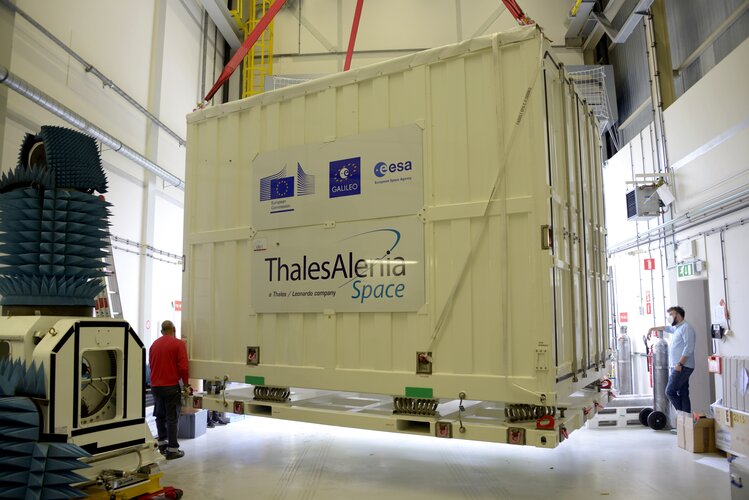
The first Galileo Second Generation hardware has begun testing, with test versions of the satellites’ navigation payloads undergoing evaluation by Airbus Defence and Space at their Ottobrunn facility in Germany and by Thales Alenia Space at ESA’s ESTEC technical centre in the Netherlands.
Call for ideas to augment satnav with imaging sensors & 3D maps
14.6.2021 15:01
Update: NAVISP webinar replay now added below
Busy urban centres represent key areas of demand for satellite navigation services, but dense concentrations of high buildings mean that satnav signal reception may sometimes fall short. So ESA is issuing a call for ideas to make up for such service gaps through the use of imaging and 3D mapping technology – ahead of a dedicated workshop on 6 July.
Call for ideas to augment satnav with imaging sensors & 3D maps
14.6.2021 15:01
Busy urban centres represent key areas of demand for satellite navigation services, but dense concentrations of high buildings mean that satnav signal reception may sometimes fall short. So ESA is issuing a call for ideas to make up for such service gaps through the use of imaging and 3D mapping technology – ahead of a dedicated workshop on 6 July.
Galileo satellites’ last step before launch
3.6.2021 13:04
Europe’s Galileo satellite navigation constellation is set to grow. Later this year the first two out of 12 ‘Batch 3’ Galileo satellites will be launched by Soyuz from French Guiana. Their last step on the way to launch is situated beside sand dunes on the Dutch coast: the ESTEC Test Centre, which is Europe’s largest satellite test facility.
ESA signs contract for new generation of Galileo
28.5.2021 9:14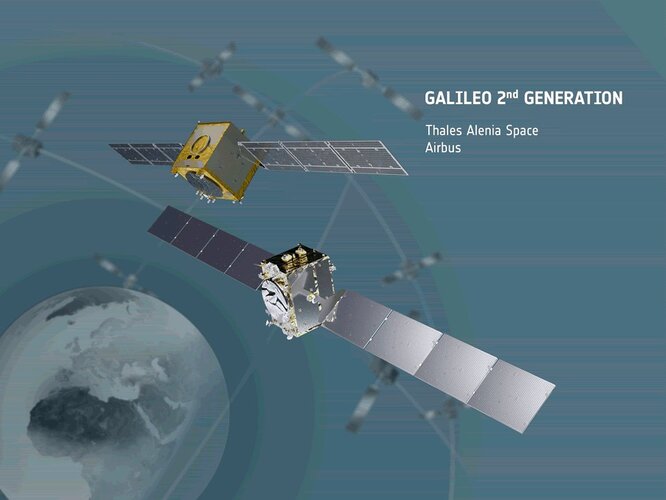
Acting on behalf of the European Commission, ESA has signed two contracts for an overall amount of €1.47 billion, to design and build the first batch of the second generation of Europe’s Galileo navigation satellites.
Lunch with the Moon
27.5.2021 12:30 Video:
03:32:49
Video:
03:32:49
For the first time in more than three years, on 26 May 2021, a total lunar eclipse coincided with a supermoon. The 'super blood moon' was unfortunately only visible across Australia and parts of the US and East Asia. But ESA, in cooperation with the Australian science agency, CSIRO, brought this celestial treat to European viewers through its live webcast "Lunch with the Moon".
Catch the replay of this unique event, which includes live footage of the Moon from across the globe and conversations with experts on the science of lunar eclipses, what would happen if there were no Moon, fascinating insights into Europe's future at the Moon including the Moonlight project, lunar robots and robotics, a future human lunar base and much more.
Lunch with the Moon
27.5.2021 12:30 Video:
03:32:49
Video:
03:32:49
For the first time in more than three years, on 26 May 2021, a total lunar eclipse coincided with a supermoon. The 'super blood moon' was unfortunately only visible across Australia and parts of the US and East Asia. But ESA, in cooperation with the Australian science agency, CSIRO, brought this celestial treat to European viewers through its live webcast "Lunch with the Moon".
Catch the replay of this unique event, which includes live footage of the Moon from across the globe and conversations with experts on the science of lunar eclipses, what would happen if there were no Moon, fascinating insights into Europe's future at the Moon including the Moonlight project, lunar robots and robotics, a future human lunar base and much more.
In the programme, the moment of “totality” – when the Moon is fully shrouded in Earth’s shadow – begins around 1:46:00.
Schedule
02:10 Deep-space communication from Australia
13:00 All about lunar eclipses
29:10 What if there were no Moon?
43:20 Europe goes forward to the Moon
58:45 Moonlight: Connecting Earth with the Moon
1:13:20 Humans at work in a lunar setting
1:28:20 Lunar robots
1:43:45 Science and future exploration
Infographic: Moonlight - Navigation for the Moon
20.5.2021 16:09 Image:
Infographic: Infographic: Moonlight - Navigation for the Moon
Image:
Infographic: Infographic: Moonlight - Navigation for the Moon
ESA advances its plan for satellites around the Moon
20.5.2021 14:00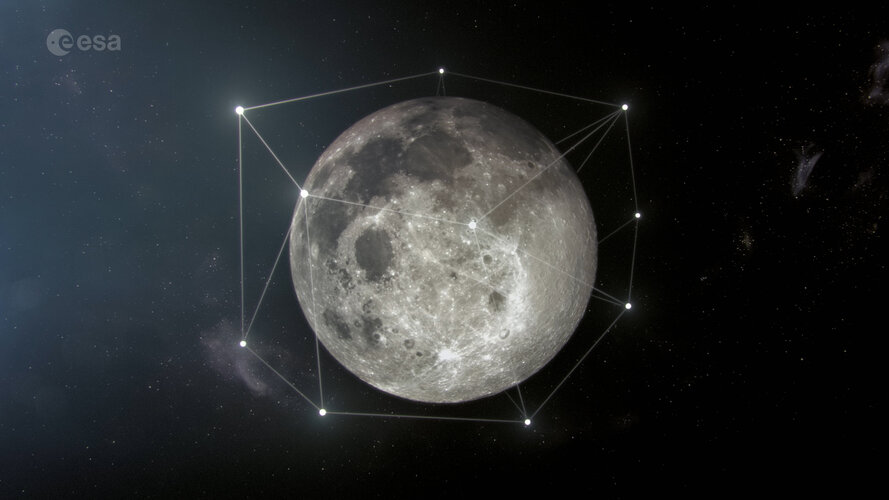
A bold proposal to create a commercially viable constellation of lunar satellites has taken a step closer.
ESA-backed autonomous driving lab set for Italy
23.4.2021 10:10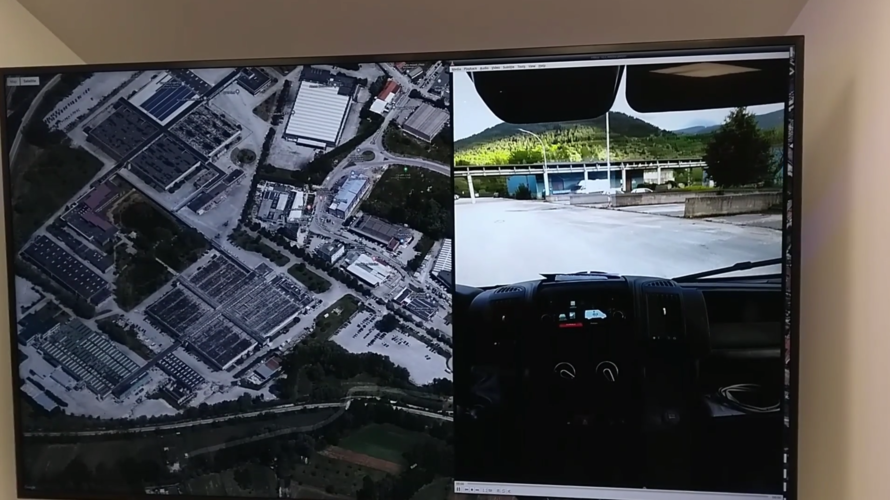
Central Italy – already home to an ambitious national autonomous driving research initiative – will be the site of the ESA-backed P-CARS laboratory, intended to certify positioning devices for use within driverless cars.
Video: How Galileo works, for its 2 billion global users
20.4.2021 7:20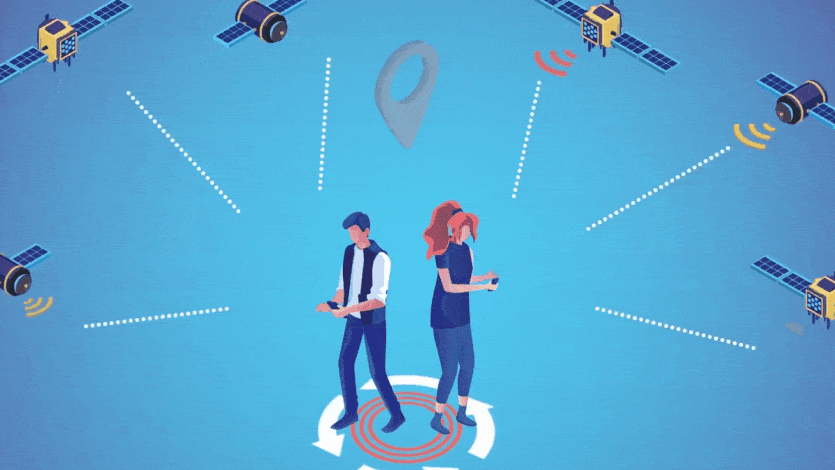
Video: How Galileo works, for its 2 billion global users
406 Day: celebrating Galileo saving lives
6.4.2021 12:30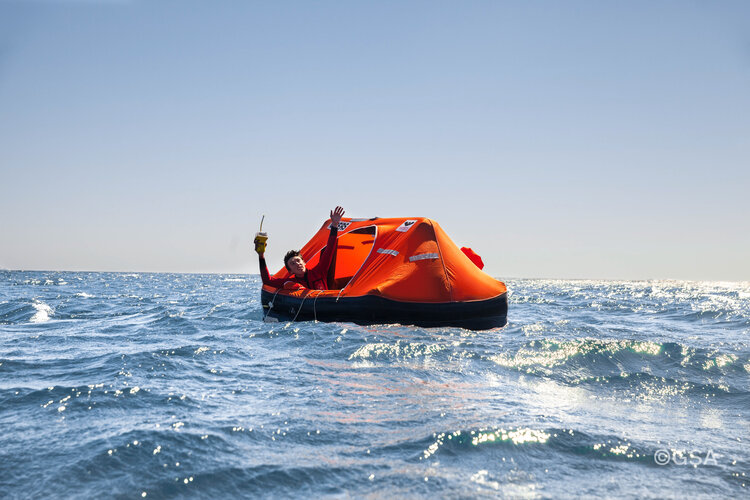
Today is 406 Day – the annual campaigning day to spread awareness of the importance of emergency beacons, and the satellites that pick up their signals, including Europe’s Galileo constellation. As well as letting people across the world find their way, Galileo also serves to detect SOS messages and relay them to authorities, contributing to saving many lives.
Galileo will help Lunar Pathfinder navigate around Moon
18.3.2021 15:16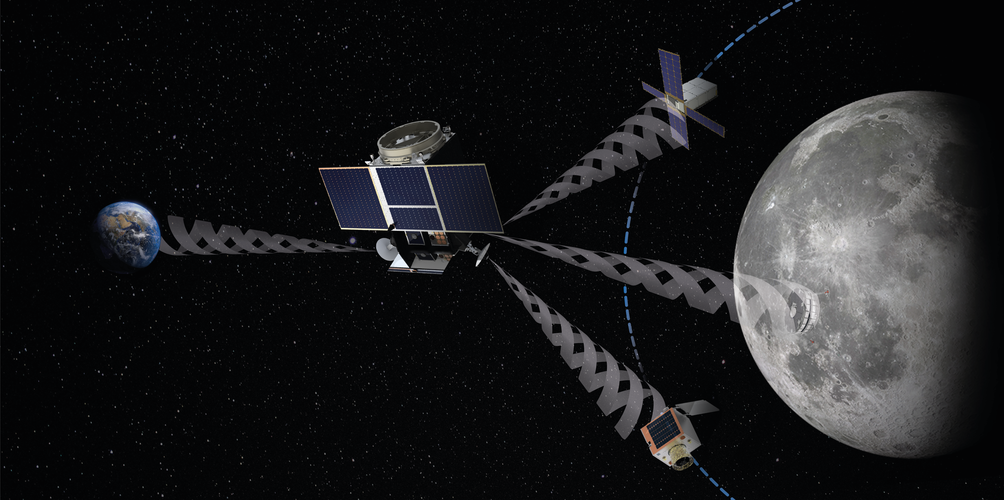
ESA’s Lunar Pathfinder mission to the Moon will carry an advanced satellite navigation receiver, in order to perform the first ever satnav positioning fix in lunar orbit. This experimental payload marks a preliminary step in an ambitious ESA plan to expand reliable satnav coverage – as well as communications links – to explorers around and ultimately on the Moon during this decade.
Galileo will help Lunar Pathfinder navigate around Moon
18.3.2021 15:16
ESA’s Lunar Pathfinder mission to the Moon will carry an advanced satellite navigation receiver, in order to perform the first ever satnav positioning fix in lunar orbit. This experimental payload marks a preliminary step in an ambitious ESA plan to expand reliable satnav coverage – as well as communication links – to explorers around and ultimately on the Moon during this decade.
Ten years of safer skies with Europe’s other satellite navigation system
17.3.2021 11:02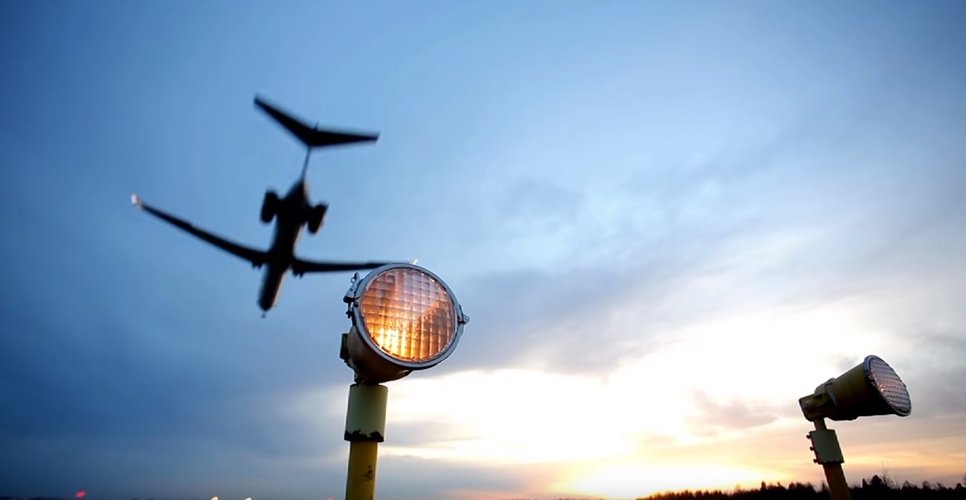
With 26 satellites in orbit and more than two billion receivers in use, Europe’s Galileo satellite navigation system has made a massive impact. But our continent has another satnav system that has been providing safety-of-life services for ten years now – chances are that you’ve benefited from it without noticing.
Ten years of safer skies with Europe’s other satnav system
17.3.2021 11:02
With 26 satellites in orbit and more than two billion receivers in use, Europe’s Galileo satellite navigation system has made a massive impact. But our continent has another satnav system that has been providing safety-of-life services for ten years now – chances are that you’ve benefited from it without noticing.
How Galileo performed first-ever authenticated positioning fix
10.3.2021 12:40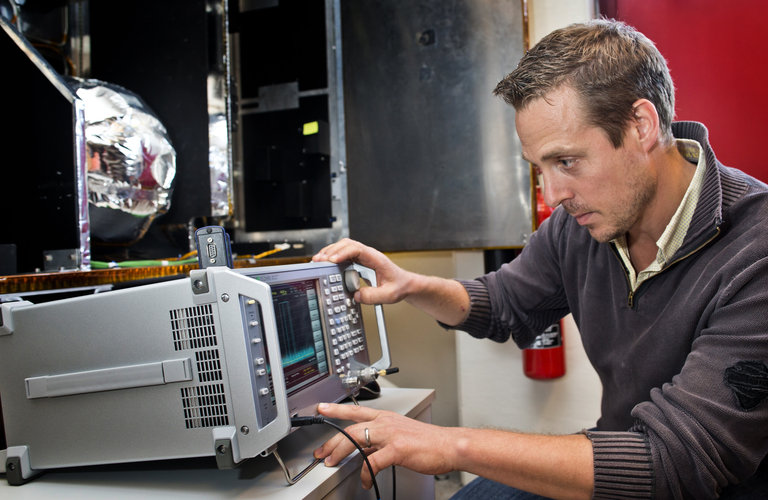
In a first for any satellite navigation system, Galileo has achieved a positioning fix based on open-service navigation signals carrying authenticated data. Intended as a way to combat malicious ‘spoofing’ of satnav signals, this authentication testing began at ESA’s Navigation Laboratory – the same site where the very first Galileo positioning fix took place back in 2013.
How Galileo performed first-ever authenticated positioning fix
10.3.2021 12:40
In a first for any satellite navigation system, Galileo has achieved the first positioning fix based on open-service navigation signals carrying authenticated data. Intended as a way to combat malicious ‘spoofing’ of satnav signals, this authentication testing began at ESA’s Navigation Laboratory – the same site where the very first Galileo positioning fix took place back in 2013.
How Galileo performed first-ever authenticated positioning fix
10.3.2021 12:40
In a first for any satellite navigation system, Galileo has achieved a positioning fix based on open-service navigation signals carrying authenticated data. Intended as a way to combat malicious ‘spoofing’ of satnav signals, this authentication testing began at ESA’s Navigation Laboratory – the same site where the very first Galileo positioning fix took place back in 2013.
Join ESA’s virtual workshop on 5G plus satnav
23.2.2021 8:30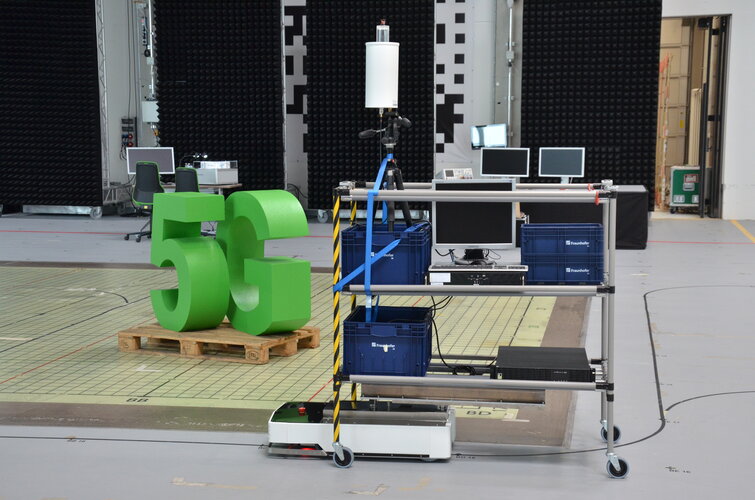
The coming of 5G promises much more than simply better-than-wi-fi smartphone connectivity; it should enable a wide range of novel services, including asset tracking, autonomous driving and drone flying as well as the internet of things. Highly precise localisation is needed to make such innovations feasible however. ESA has led a major project assessing the potential of 5G and satellite navigation in combination and next month a webinar will make its initial findings public.
Galileo/GNSS vacancies at ESA
22.2.2021 17:00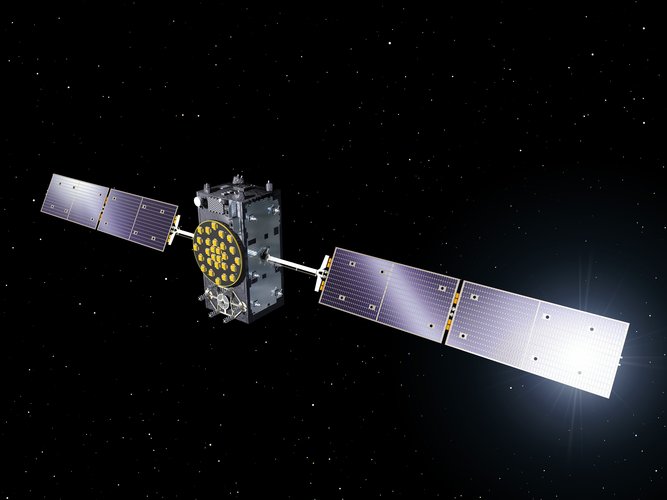
We are looking for Global Navigation Satellite System experts to join our team and support the design and development of the next generation of satellites for Europe’s GNSS System, Galileo. If you have experience in GNSS systems, space systems, project planning or Galileo architecture read on to find out more.
Tests of Galileo Open Service Navigation Message Authentication underway
11.2.2021 9:07
Galileo has started testing Open Service Navigation Message Authentication (OSNMA) in its signal-in-space, allowing the first-ever OSNMA-protected position fix to be successfully computed. Testing will continue over the next months, ahead of a so-called ‘public observation’ phase. This is the first-ever transmission of authentication features in open GNSS signals of a global navigation system.
Satnav antenna built for ends of the Earth
27.1.2021 9:07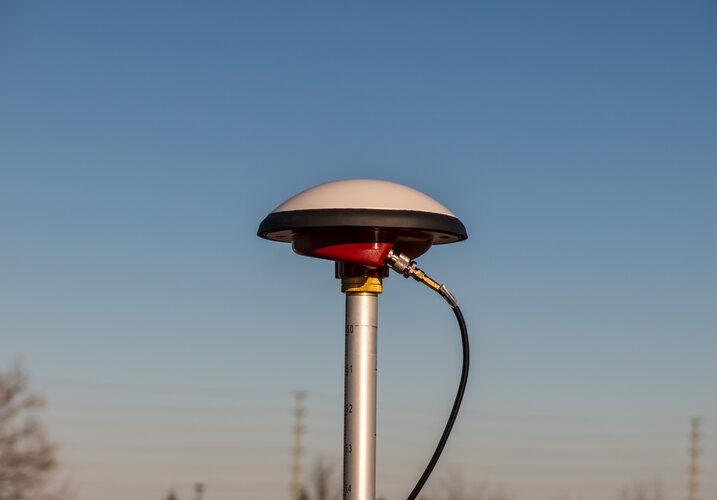
A new ESA-supported wide-bandwidth satnav antenna has been designed to receive both satellite and augmentation signals from anywhere in the sky, even down to just a couple of degrees above the horizon.
Autonomous driving on intelligent road at Europe’s edge
13.1.2021 9:41
An ESA-supported effort put an intelligent road up in Finnish Lapland through its paces, assessing its suitability for testing autonomous vehicles in some of Europe’s most challenging driving conditions.
How far we've come: Galileo’s 500th ESA Engineering Board
11.1.2021 8:34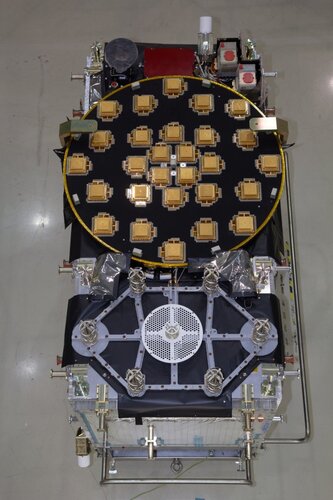
The end of 2020 marked a notable milestone for Europe’s Galileo First Generation, as the programme chalked up its 500th ESA Engineering Board.
Galileo enhancing Sentinel-6’s sea level monitoring mission
15.12.2020 15:25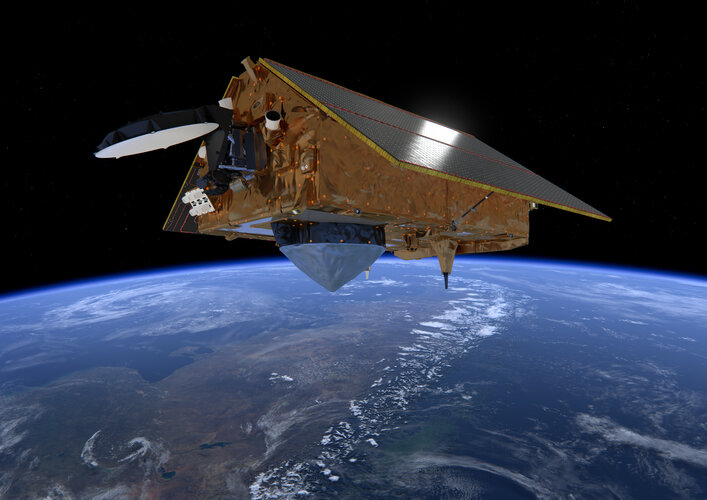
Just like your mobile phone, satellites themselves rely on satellite navigation to find their way in space. Thanks to a new ESA-developed receiver, the recently-launched Sentinel-6 is making use of Europe’s Galileo as well as the US GPS system, a fact set to sharpen the accuracy of its sea level rise measurements.
Galileo satellites help rescue Vendée Globe yachtsman
3.12.2020 15:44
A sailor in the Vendée Globe solo round-the-world yacht race faced disaster in the Southern Ocean as raging waves pounded his vessel apart. But he was saved thanks to the search and rescue antennas aboard Europe’s Galileo satellites, part of the international Cospas-Sarsat rescue system.
Moonlight: connecting Earth with the Moon
16.11.2020 16:30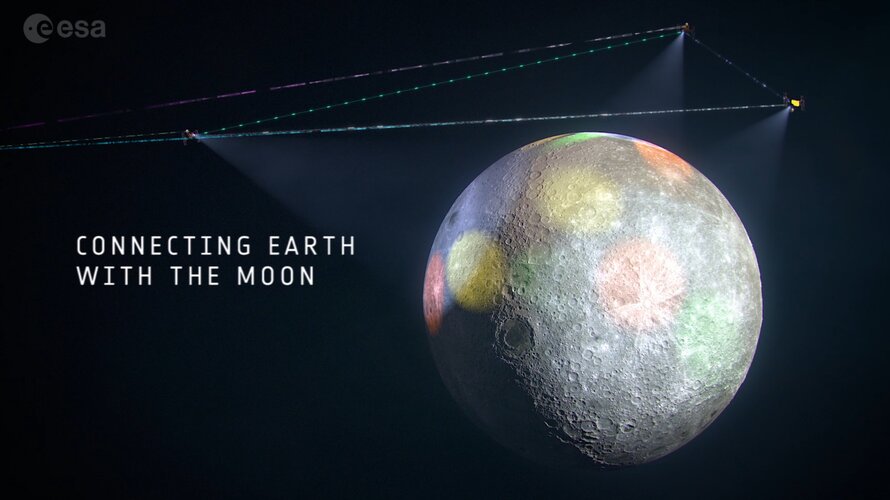 Video:
00:01:11
Video:
00:01:11
Lunar exploration relies on the extensive expertise that is on hand across ESA. As a new lunar economy emerges, it will create new opportunities involving robots, habitats and transportation. Missions to the Moon share similar communication and navigation needs that could be satisfied using a constellation of lunar satellites.
Under the agency’s "Moonlight" initiative, ESA is exploring with industry the necessary technical solutions along with delivery models for the provision of lunar telecommunication and navigation services.
Moonlight: connecting Earth with the Moon
16.11.2020 16:30 Video:
00:01:11
Video:
00:01:11
Lunar exploration relies on the extensive expertise that is on hand across ESA. As a new lunar economy emerges, it will create new opportunities involving robots, habitats and transportation. Missions to the Moon share similar communication and navigation needs that could be satisfied using a constellation of lunar satellites.
Under the agency’s "Moonlight" initiative, ESA is exploring with industry the necessary technical solutions along with delivery models for the provision of lunar telecommunication and navigation services.
Read the background article on Moonlight to learn more about the initiative.
Baltic ferry gathers data for self-aware sailing
16.11.2020 13:20
A day of ferry trips between Finland and Estonia became some of the best documented voyages in maritime history. Cameras, sensors, radio and satellite navigation receivers and even microphones recorded every instant of the crossings over the Baltic, gathering raw data for a new ESA-led project applying AI to the situational awareness of shipping – as an important step to full autonomy.
5G to help smart factories and masses of drones find their way
4.11.2020 13:24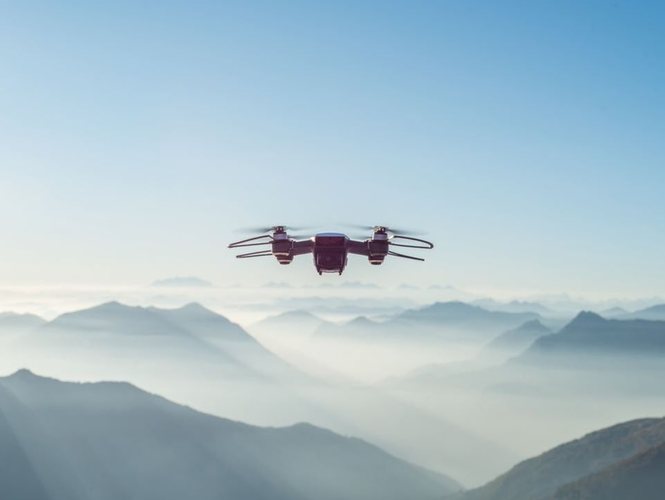
5G will offer more to users than simply ultrafast communications; this better-than-wifi mobile standard should also deliver enhanced positioning to users. Accordingly, it is set to enable a wide range of potential applications from continuously-tracked smart factories to swarms of high-precision drones and assisted or self-driving cars.
Video: The world's most accurate navigation signals
26.10.2020 11:40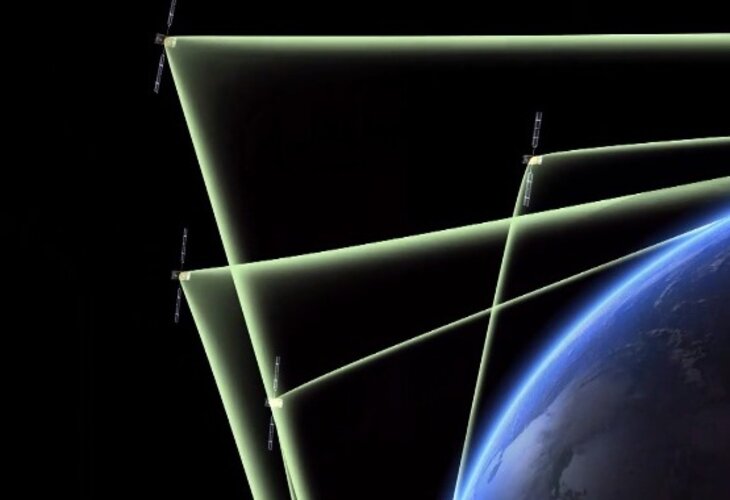
Video: The world's most accurate navigation signals
ESA call to demonstrate positioning and timing capabilities of coming 5G networks
9.10.2020 10:05
ESA has launched a call for proposals to demonstrate the capabilities of new 5G cellular networks to support positioning and timing applications to complement satellite navigation, just as today’s smartphones harness cellular data to support their positioning services.
ESA Discovery studies lay path to navigating the Moon
2.10.2020 11:44
Just as we navigate our way around Earth's surface using the connection between our phones and navigation satellites high above us, our missions use the very same satellites to navigate their way in space.
Satnav loss might shut down sea, warns ESA-backed study
24.9.2020 8:37
Satellite navigation is precise, reliable and available continuously around the globe, but overreliance on it presents a clear and present danger to the smooth passage of maritime trade, concludes a major ESA-backed study.
Satnav loss might shut down sea, warns ESA-backed study
24.9.2020 8:37
Satellite navigation is precise, reliable and available continuously around the globe, but overreliance on it presents a clear and present danger to the smooth passage of maritime trade, concludes a major ESA-backed study.
Driverless cars take safety lead from aircraft
3.9.2020 10:55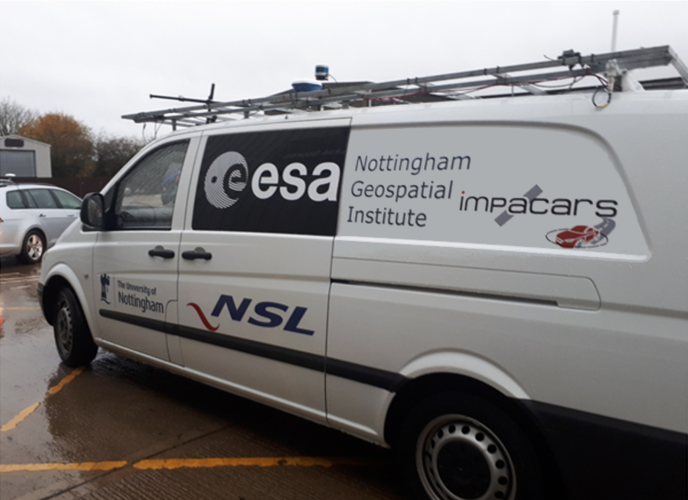
With more than nine tenths of driving deaths linked to human error, the coming wave of autonomous vehicles could potentially save many lives – as well as slashing congestion and pollution levels. An ESA-backed project in the UK borrowed a key operating concept from aviation to bring the safety of driverless cars closer to that of flying – statistically the safest form of transport.
Driverless cars take safety lead from aircraft
3.9.2020 10:55
With more than nine tenths of driving deaths linked to human error, the coming wave of autonomous vehicles could potentially save many lives, as well as slashing congestion and pollution levels. An ESA-backed project in the UK borrowed a key operating concept from aviation to bring the safety of driverless cars closer to that of flying – statistically the safest form of transport.
Galileo next-gen satellites on the horizon
14.8.2020 12:04
With 26 satellites now in orbit and over 1.5 billion smartphones and devices worldwide receiving highly accurate navigation signals, Europe’s Galileo navigation system will soon become even better, ensuring quality services over the next decades.
Meet the Experts: Satellite Navigation
3.8.2020 10:00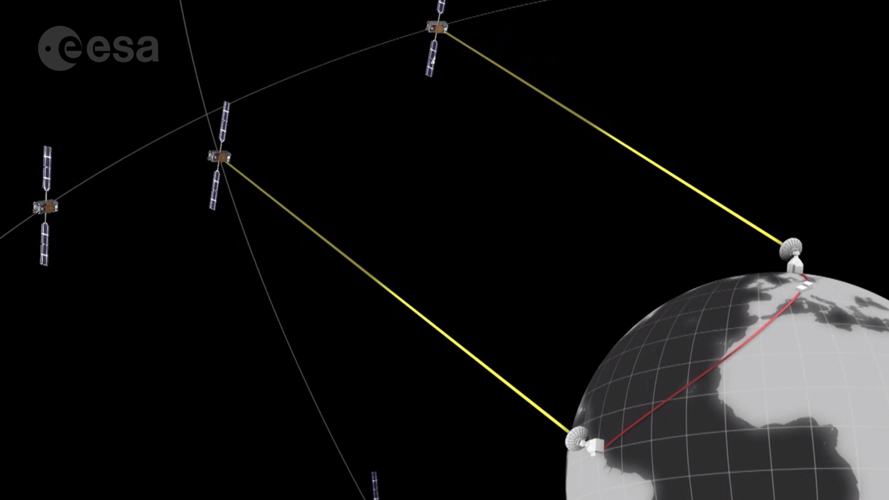 Video:
00:06:21
Video:
00:06:21
Satellite navigation is a big part of our daily lives. How do our phones and cars know where to go? Nicola de Quattro, head of engineering and innovation at Vitrociset Belgium, explains how sat nav works along with its present and future applications in this episode of Meet The Experts. Find more episodes in the series here.
Meet the Experts: Satellite Navigation
3.8.2020 10:00 Video:
00:06:21
Video:
00:06:21
Satellite navigation is a big part of our daily lives. How do our phones and cars know where to go? Nicola de Quattro, head of engineering and innovation at Vitrociset Belgium, explains how sat nav works along with its present and future applications in this episode of Meet The Experts. Find more episodes in the series here.
GIDAS: Real-time interference detection making satnav safer
20.7.2020 10:40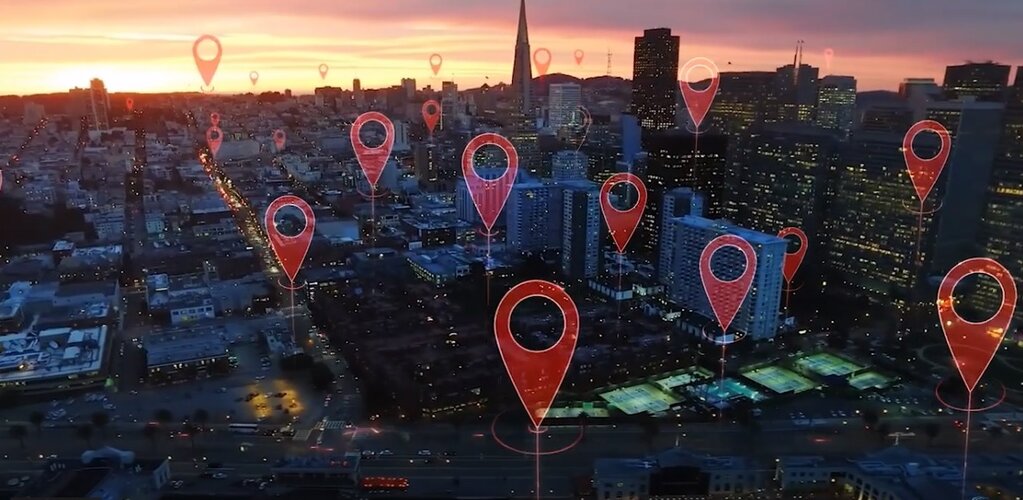
A new monitoring system developed through an ESA-backed project works like a ‘bodyguard’ for satellite navigation in use at strategic or safety-critical sites. Known as GIDAS, the scalable system immediately detects, identifies and pinpoints satnav interference sources in its vicinity.
Who’s ready to serve the lunar missions?
13.7.2020 12:57
ESA has long-established plans to create a commercial lunar satellite network and now seeks expressions of interest from companies prepared to build and operate it.
Galileo positioning aiding COVID-19 reaction
29.4.2020 10:59
As European governments plan their phased recoveries from the lockdown states triggered by the COVID-19 pandemic, the positioning delivered through satellite navigation is becoming more important than ever before. Location is a key requirement when attempting to monitor and map the spread of a disease and satnav is one of the main tools supporting this.
Galileo positioning aiding Covid-19 reaction
29.4.2020 10:59
As European governments plan their phased recoveries from the lockdown states triggered by the COVID-19 pandemic, the positioning delivered through satellite navigation is becoming more important than ever before. Location is a key requirement when attempting to monitor and map the spread of a disease and satnav is one of the main tools supporting this.
Galileo positioning aiding COVID-19 reaction
29.4.2020 10:59
As European governments plan their phased recoveries from the lockdown states triggered by the COVID-19 pandemic, the positioning delivered through satellite navigation is becoming more important than ever before. Location is a key requirement when attempting to monitor and map the spread of a disease and satnav is one of the main tools supporting this.
ESA’s Navigation Directorate supporting EGNOS and Galileo services continuity
30.3.2020 9:35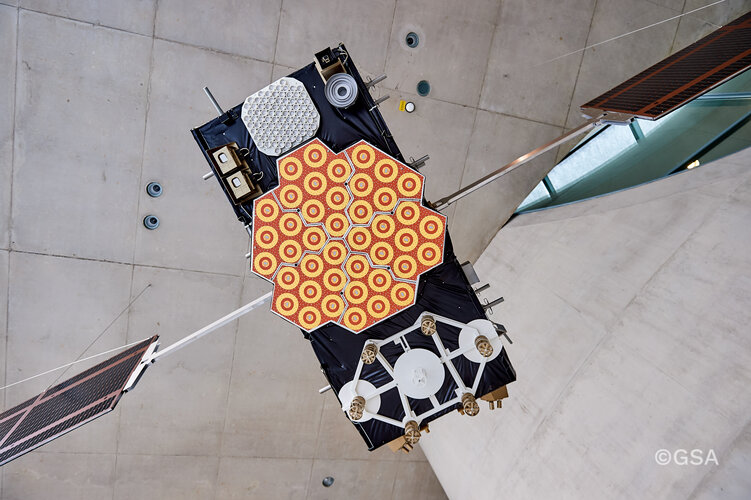
In response to the ongoing Coronavirus pandemic, ESA’s Directorate of Navigation has shifted to teleworking while also ensuring the continuity of essential tasks, in particular the continued delivery of positioning, navigation, and timing services of the European satellite navigation system Galileo and the augmentation system EGNOS.
ESA’s Navigation Directorate supporting EGNOS and Galileo services continuity
30.3.2020 9:35
In response to the ongoing Coronavirus pandemic, ESA’s Directorate of Navigation has shifted to teleworking while also ensuring the continuity of essential tasks, in particular the continued delivery of positioning, navigation, and timing services of the European satellite navigation system Galileo and the augmentation system EGNOS.
Augmented satnav teams work together for safer flying
5.3.2020 14:14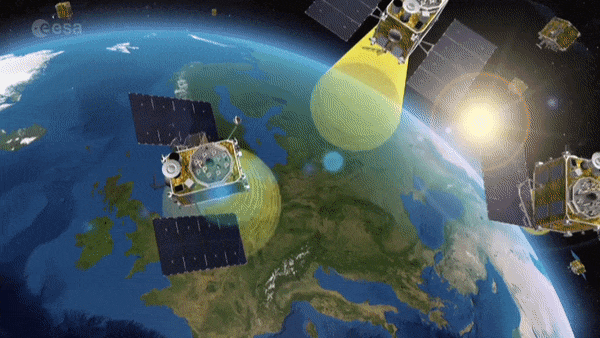
All satellite navigation is not created equal. Airliners and other safety-critical classes of users employ ‘augmented’ satnav signals, which possess additional precision plus ongoing reliability guarantees. These signals are generated by regional systems based around the globe. The teams responsible for them met recently at Delhi in India to coordinate their future development.
Augmented satnav teams work together for safer flying
5.3.2020 14:14
All satellite navigation is not created equal. Airliners and other safety-critical classes of users employ ‘augmented’ satnav signals, which possess additional precision plus ongoing reliability guarantees. These signals are generated by regional systems based around the globe. The teams responsible for them met recently at Delhi in India to coordinate their future development.
Europe and US look to future of positioning
12.2.2020 13:42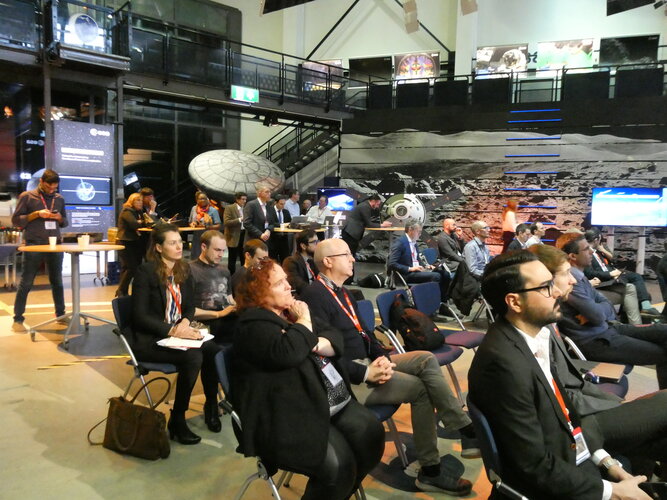
ESA’s NAVISP programme is helping invent the future of positioning, navigation and timing beyond current satellite navigation technology. The Agency’s NAVISP Industry Days welcomed a guest speaker from the US government, sharing details of a parallel effort she is overseeing from the other side of the Atlantic.
Europe and US look to future of positioning
12.2.2020 13:42
ESA’s NAVISP programme is helping invent the future of positioning, navigation and timing beyond current satellite navigation technology. The Agency’s NAVISP Industry Days welcomed a guest speaker from the US government, sharing details of a parallel effort she is overseeing from the other side of the Atlantic.
NAVISP Industry Days: navigation solutions beyond satellites
7.2.2020 10:43
More than 120 representatives of companies and research institutions across Europe met at ESA’s NAVISP Industry Days, discussing dozens of projects being supported by the Agency’s newest programme, fostering innovation and competitiveness across the European positioning, navigation and timing sector.
NAVISP Industry Days: navigation solutions beyond satellites
7.2.2020 10:43
More than 120 representatives of companies and research institutions across Europe met at ESA’s NAVISP Industry Days, discussing dozens of projects being supported by the Agency’s newest programme, fostering innovation and competitiveness across the European positioning, navigation and timing sector.
Galileo now replying to SOS messages worldwide
23.1.2020 14:22As well as providing global navigation services, Europe’s Galileo satellite constellation is contributing to saving more than 2000 lives annually by relaying SOS messages to first responders. And from now on the satellites will reply to these messages, assuring people in danger that help is on the way.
Galileo now replying to SOS messages worldwide
23.1.2020 14:22
As well as providing global navigation services, Europe’s Galileo satellite constellation is acontributing to saving more than 2000 lives annually by relaying SOS messages to first responders. And from now on the satellites will reply to these messages, assuring people in danger that help is on the way.
Galileo now replying to SOS messages worldwide
23.1.2020 14:22
As well as providing global navigation services, Europe’s Galileo satellite constellation is contributing to saving more than 2000 lives annually by relaying SOS messages to first responders. And from now on the satellites will reply to these messages, assuring people in danger that help is on the way.
CubeSat finds its way in space with Galileo receiver
9.1.2020 15:58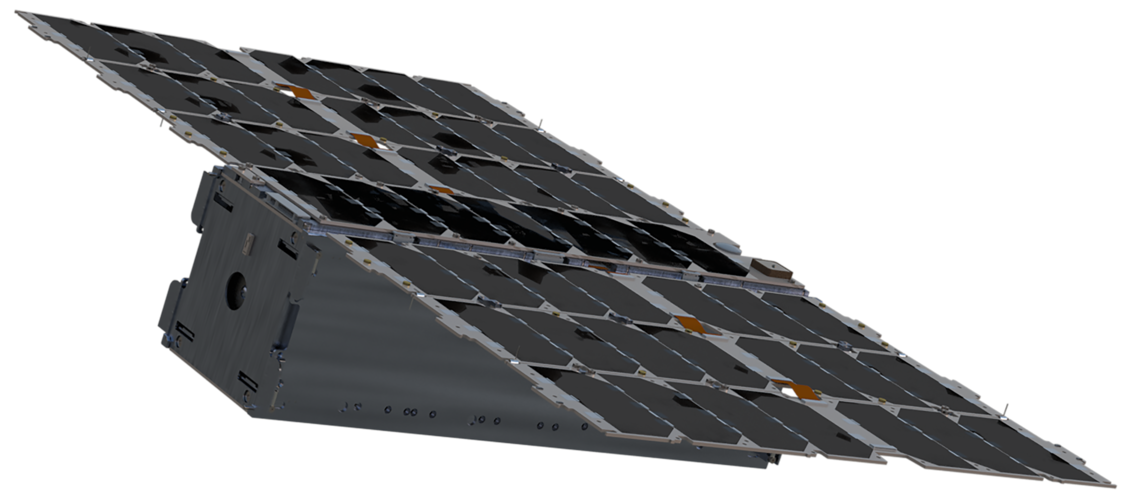
A miniature CubeSat has become the first satellite to perform Galileo-based position fixes in orbit using a commercial satnav receiver.
From airport approaches to eCall in cars – 10 years of EGNOS
20.12.2019 10:39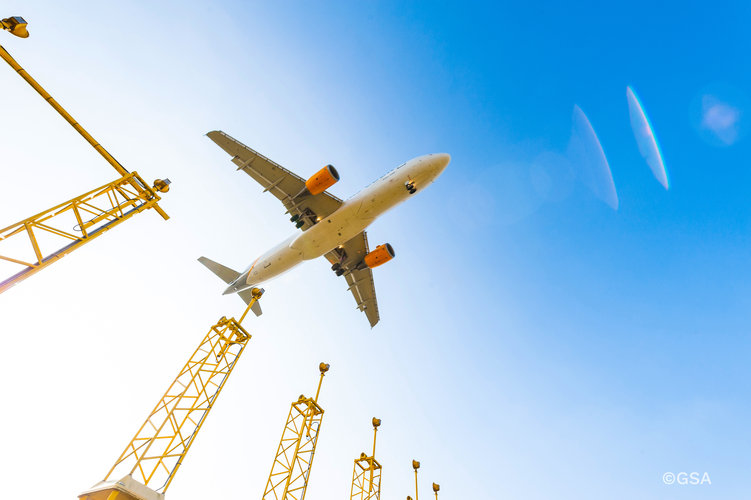
The Galileo satellite navigation system has been providing Initial Services for three years now. Meanwhile Europe’s other satnav system has marked its tenth anniversary: EGNOS has been delivering enhanced positioning to users across our continent, including safety-critical services such as aircraft landings for a growing number of European airports.
Satnav watching over rugby players
13.12.2019 13:59
As France’s top rugby players scrum, run and tackle they are being tracked by more than just TV cameras and the watching eyes of the crowd. Satnav-based tracking devices between their shoulder blades are keeping tabs on their position and performance – and helping to safeguard their health.
Join the future of navigation at ESA’s NAVISP Industry Days
19.11.2019 14:24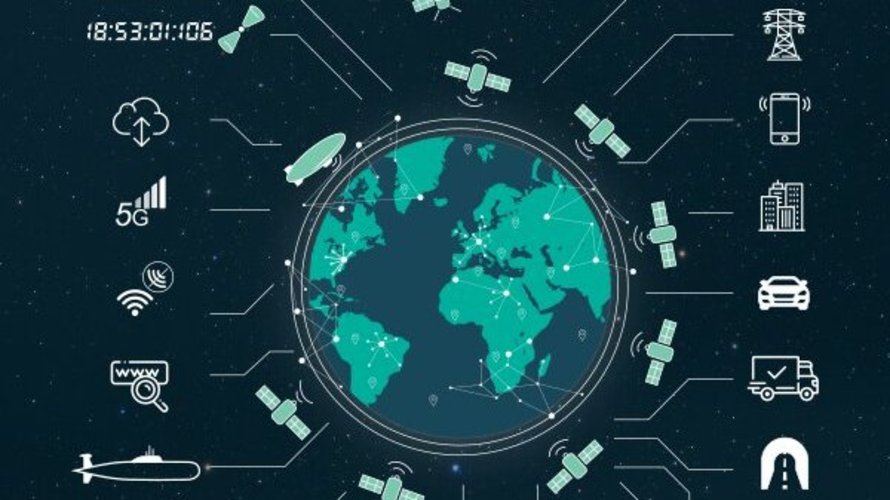
The ability to know where you are and where you’re going is central to today’s society, and will only grow more crucial in future. ESA’s NAVISP R&D programme is building on Europe’s technical accomplishments to develop new future positioning, navigation and timing technologies and services – its annual Industry Days next January will give a snapshot of the programme’s progress.
Satnav in the landscape harnessed for global error mapping
31.10.2019 15:01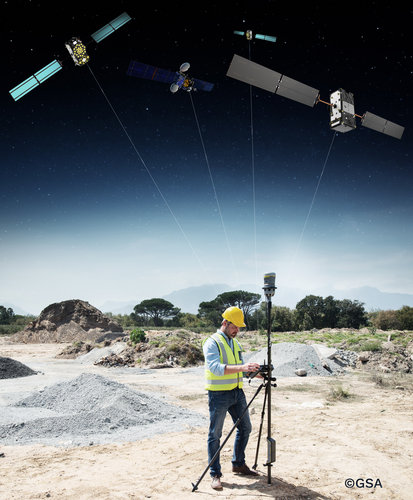
There are at the moment more than five billion satnav devices on Earth. Along with smartphones and mobile receivers, this figure includes networks of fixed receiver stations, used to boost service accuracy. A new ESA-led project will harness these networks to provide an ongoing overview of satnav performance from the global to national to regional scale.
Satnav in the landscape harnessed for global error mapping
31.10.2019 15:01
There are more than five billion satnav devices on Earth. Along with smartphones and mobile receivers, this figure includes networks of fixed receiver stations, used to improve accuracy. An ESA-led project will harness these networks to provide an ongoing overview of satnav performance from the global to national and regional scale.
Volunteer ‘saved’ from North Sea in live Galileo rescue test
4.10.2019 14:10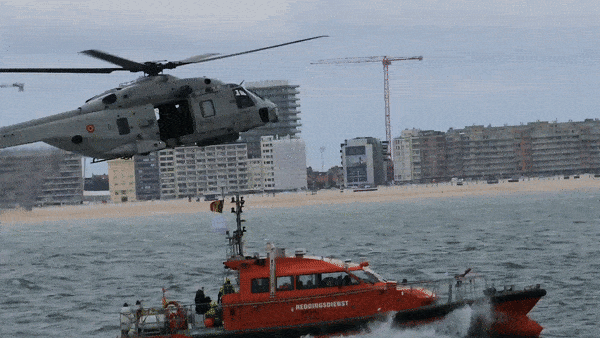
Europe’s Galileo constellation is doing more than providing global navigation services, it is also saving lives. As a real life demonstration of Galileo’s search and rescue capability, a volunteer was cast away in a lifeboat off the Belgian coast, then activated an emergency beacon for rescue.
















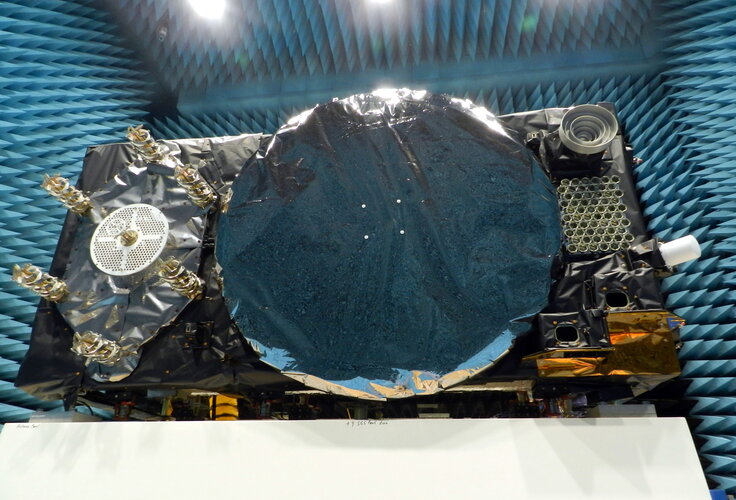 Image:
The face of Galileo
Image:
The face of Galileo
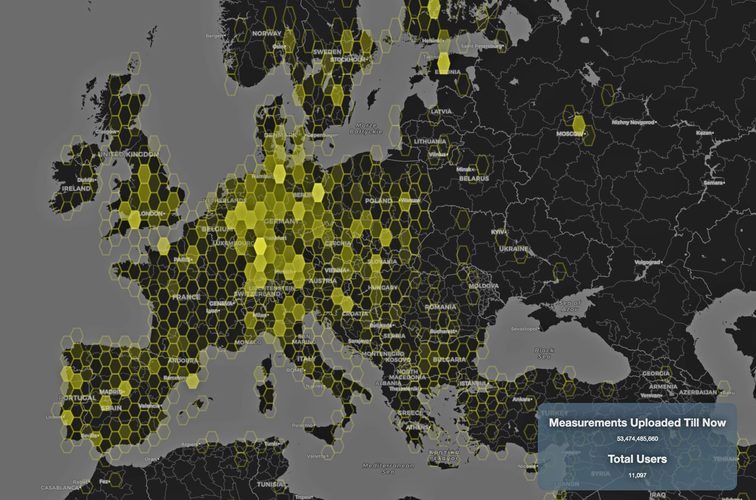 Image:
Volunteers watching the skies
Image:
Volunteers watching the skies
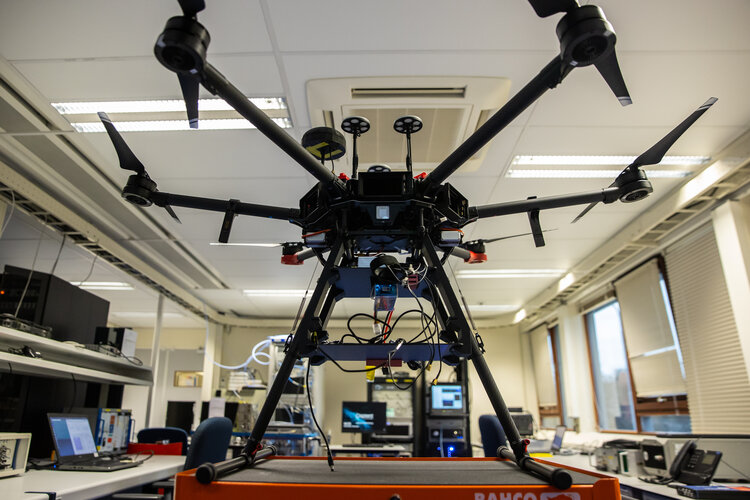 Image:
The drone has landed
Image:
The drone has landed
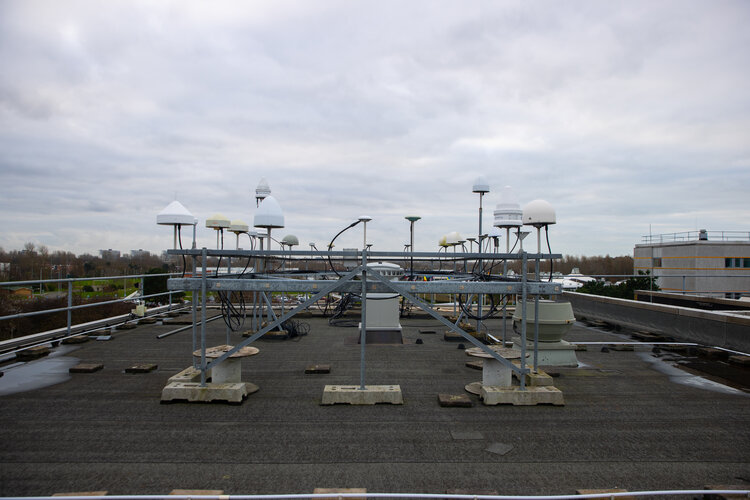 Image:
Roof of the satnav world
Image:
Roof of the satnav world
 Image:
EC Commissioner Breton visits ESTEC
Image:
EC Commissioner Breton visits ESTEC
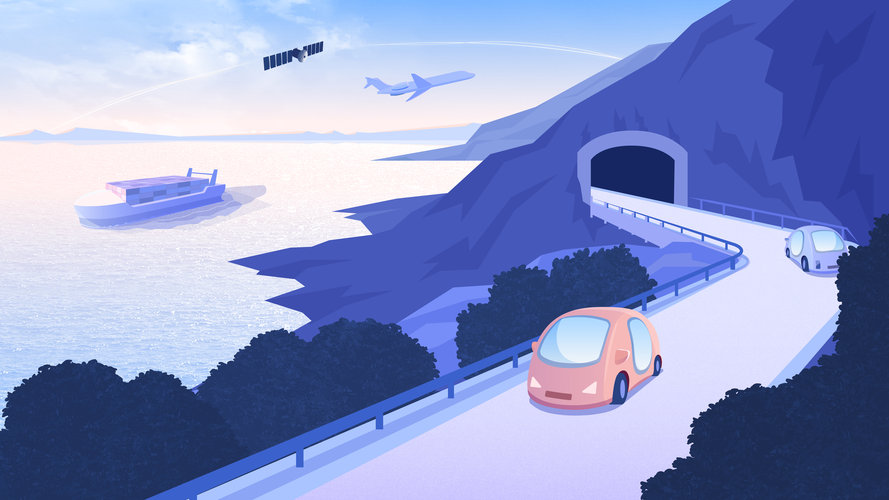
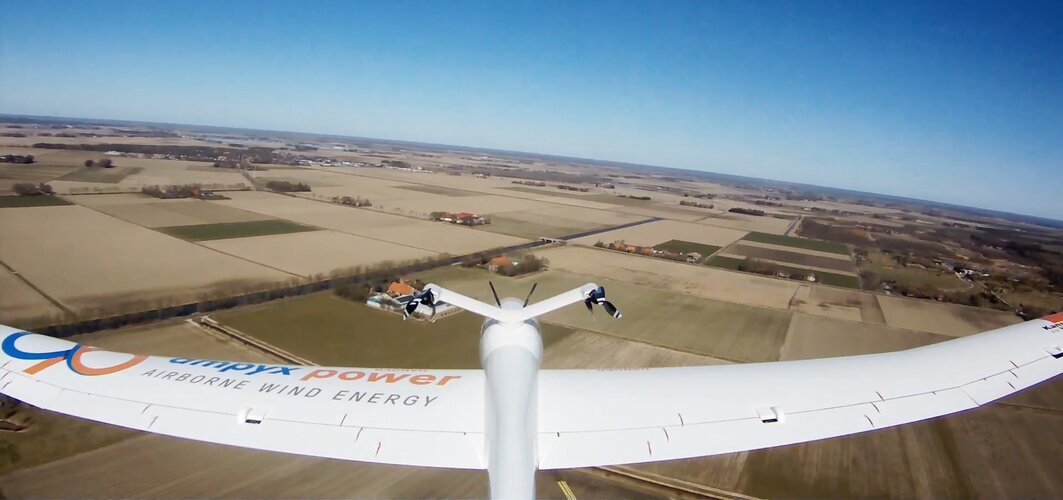 Image:
Steering drones for power generation
Image:
Steering drones for power generation
 Image:
Steering drones for power generation
Image:
Steering drones for power generation
